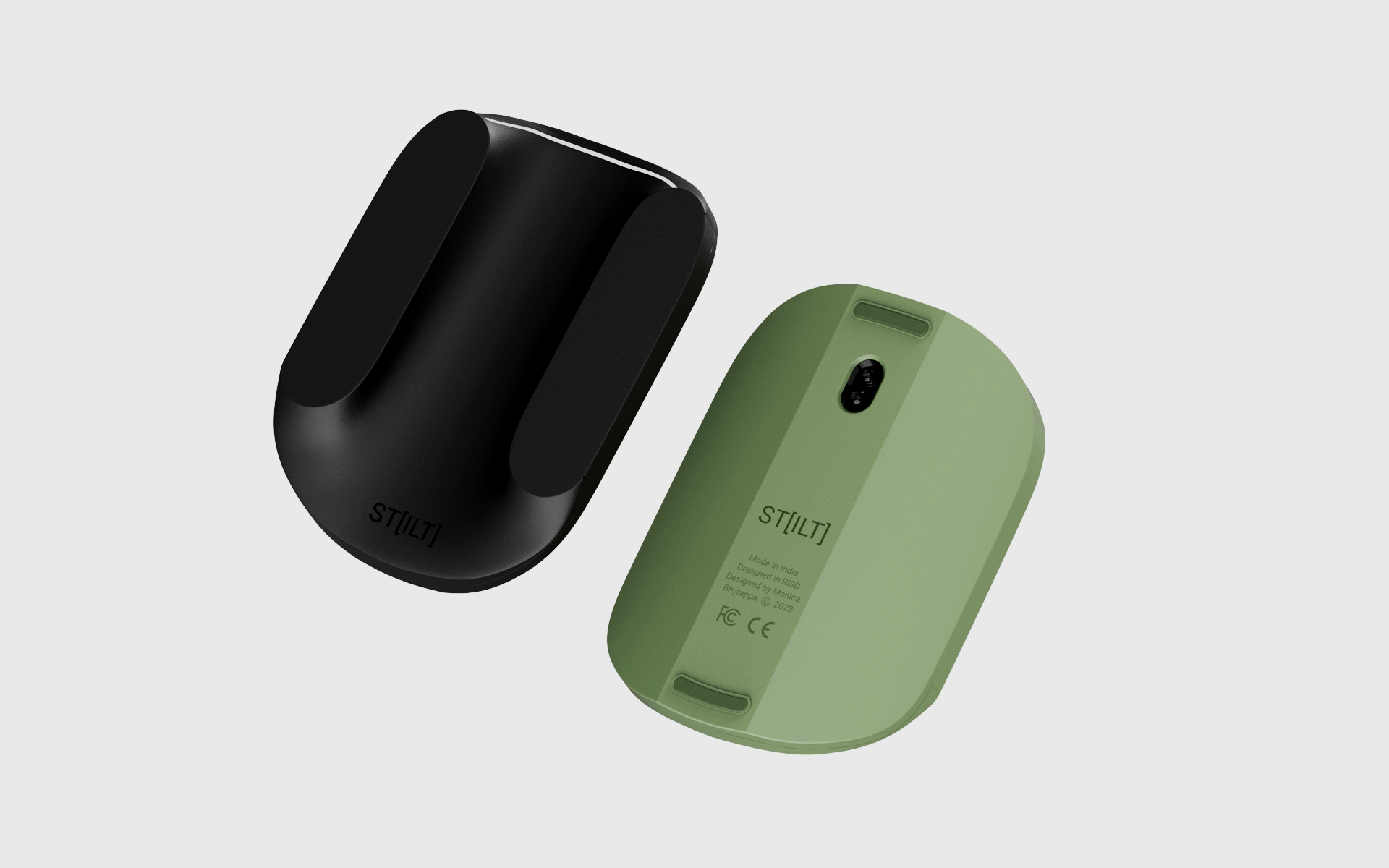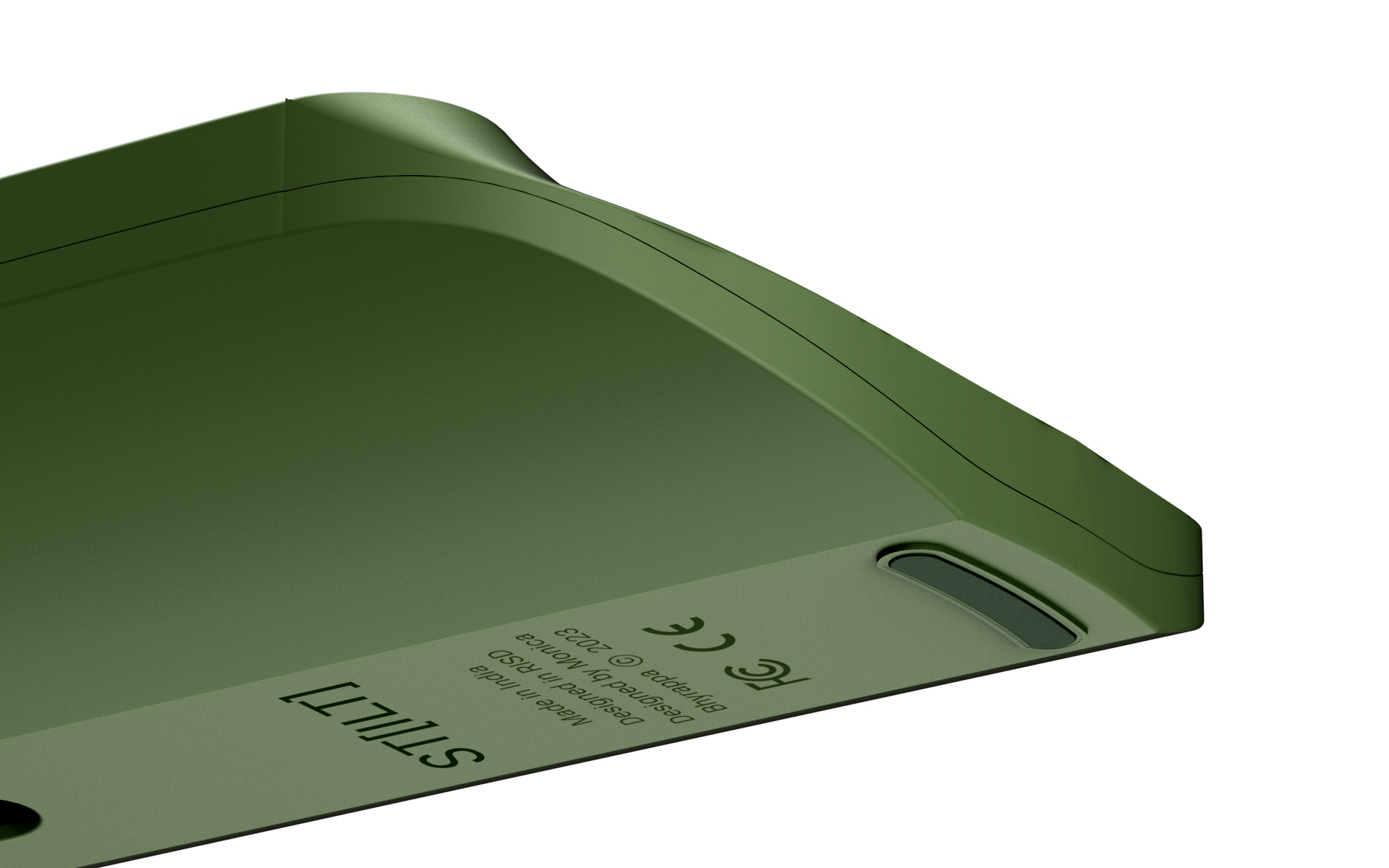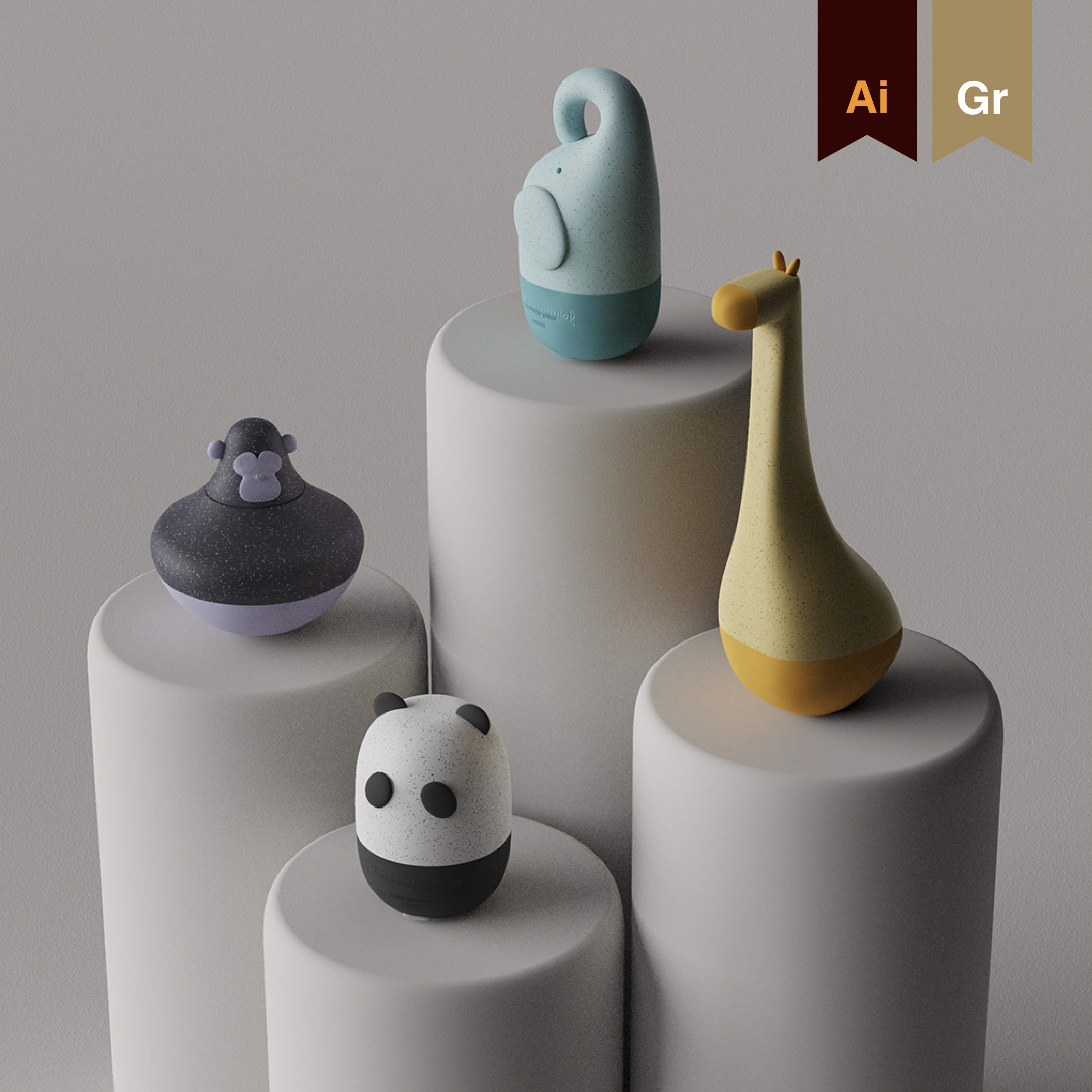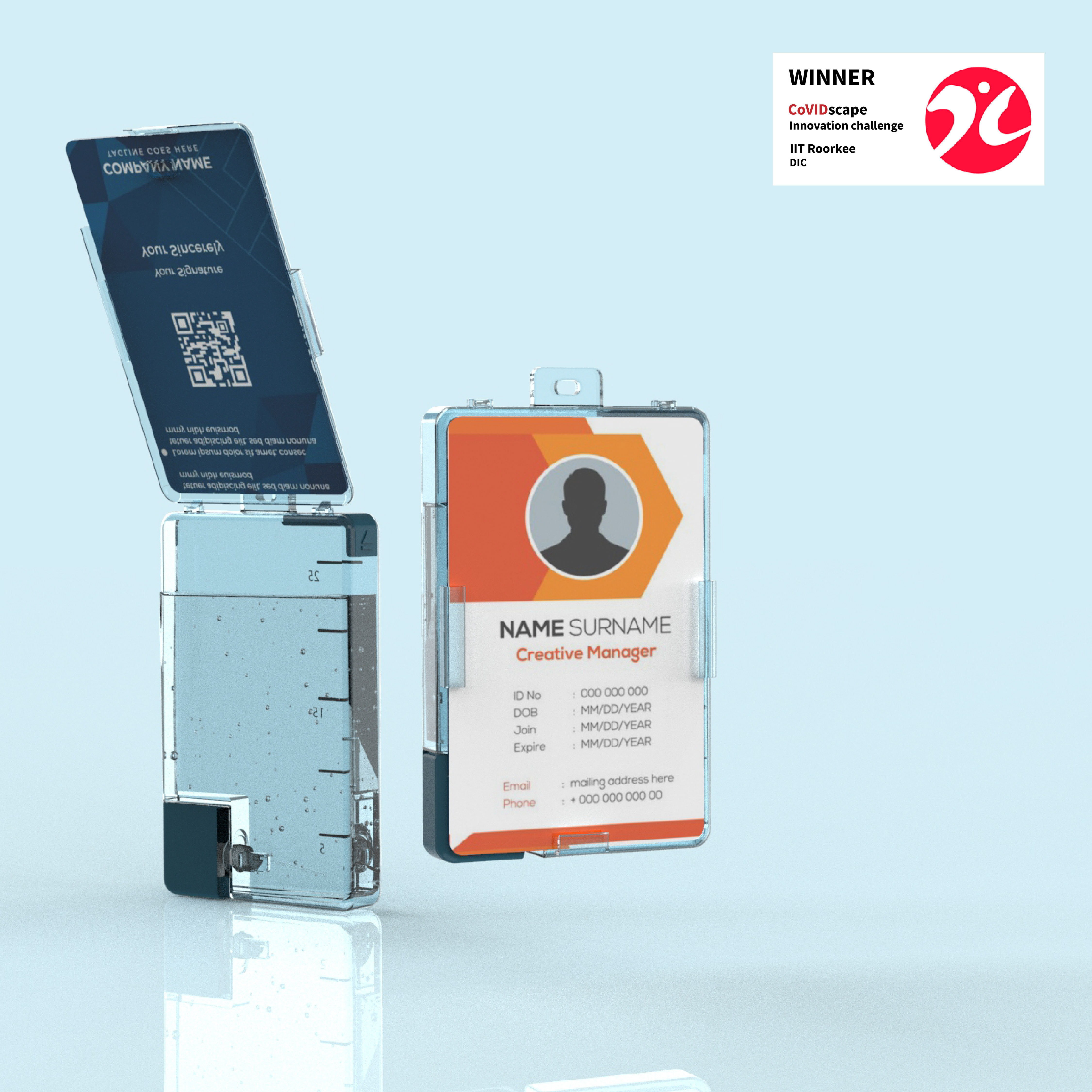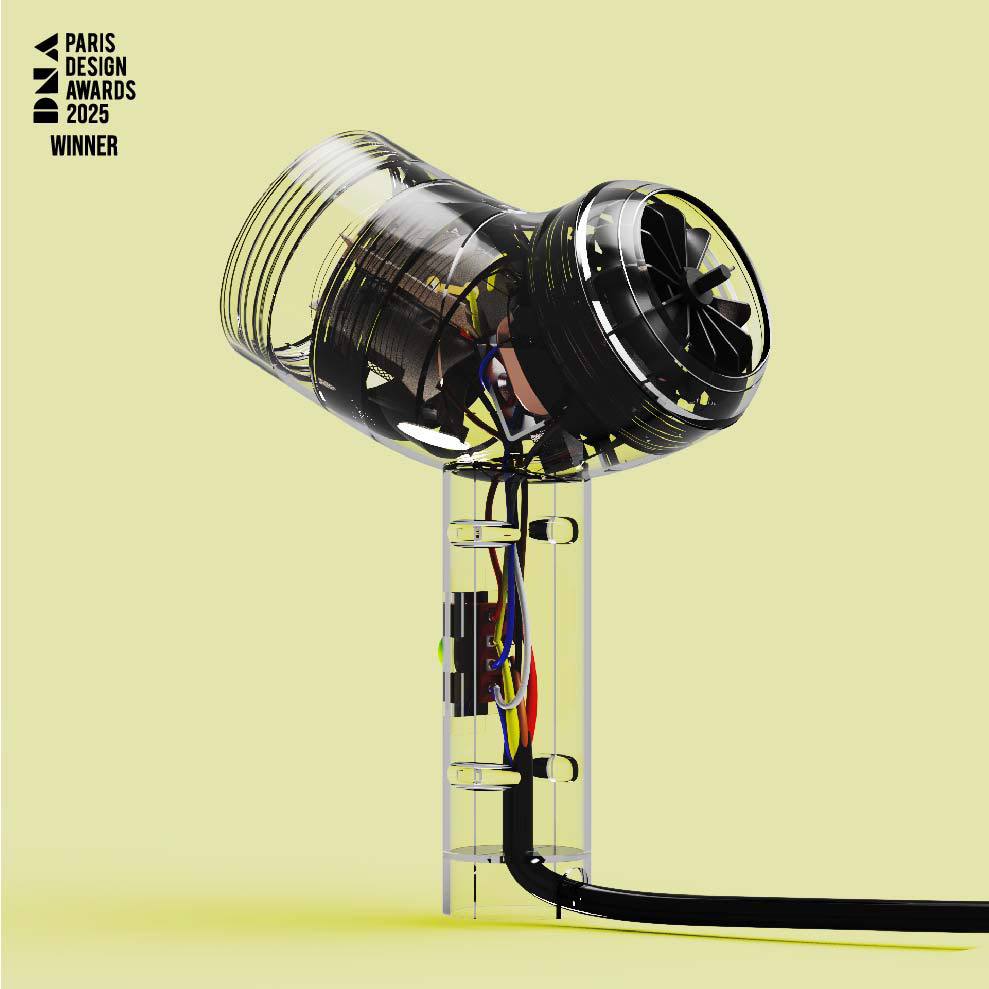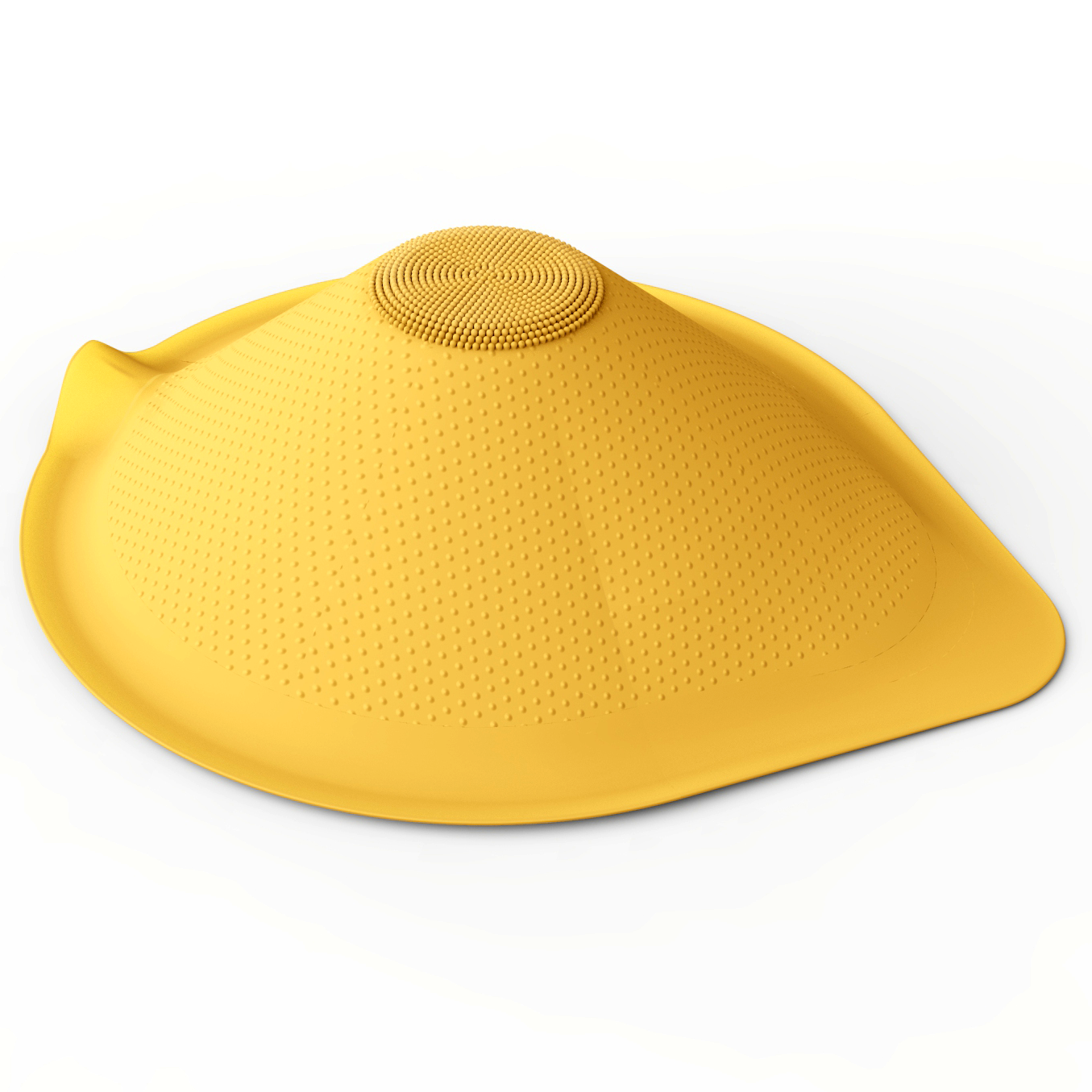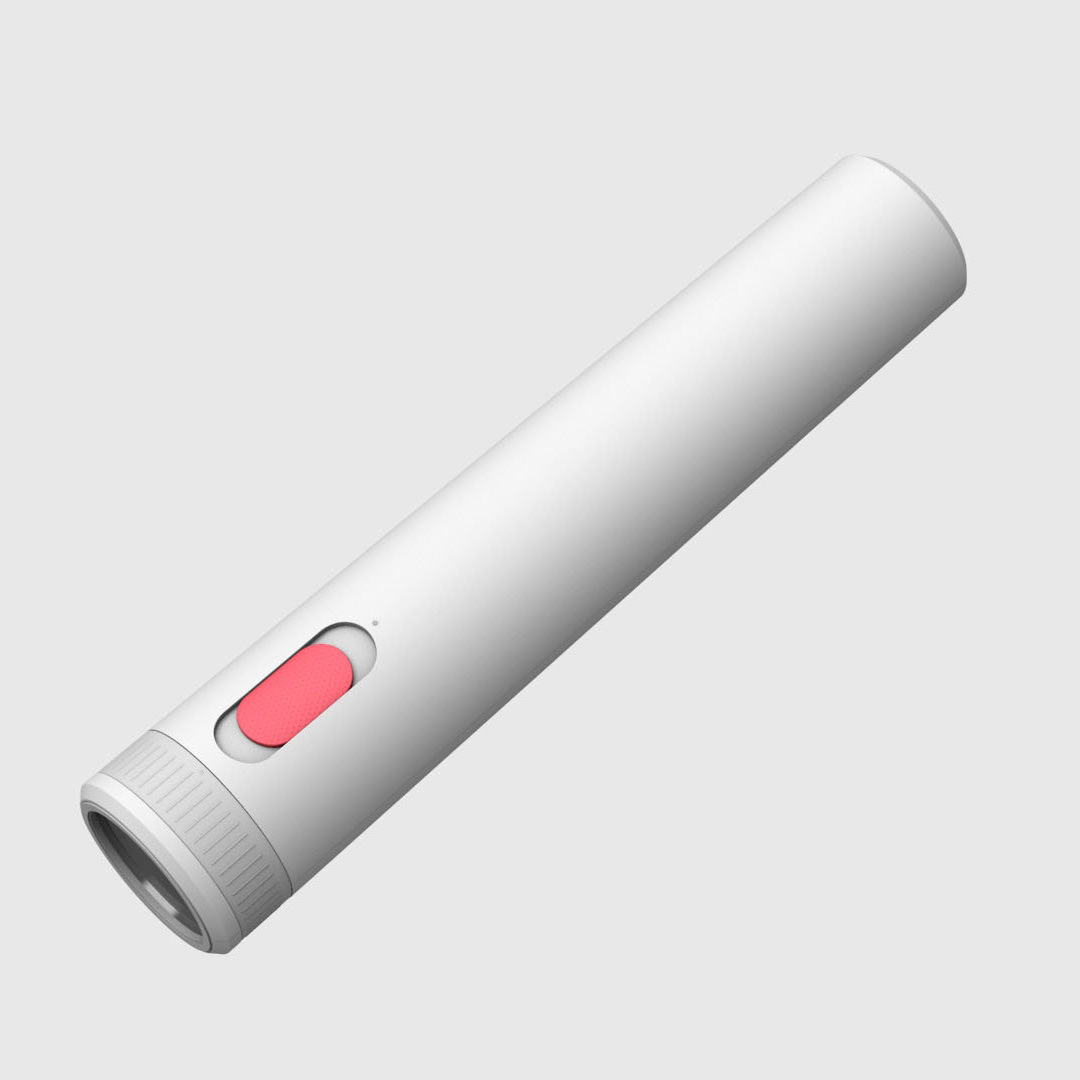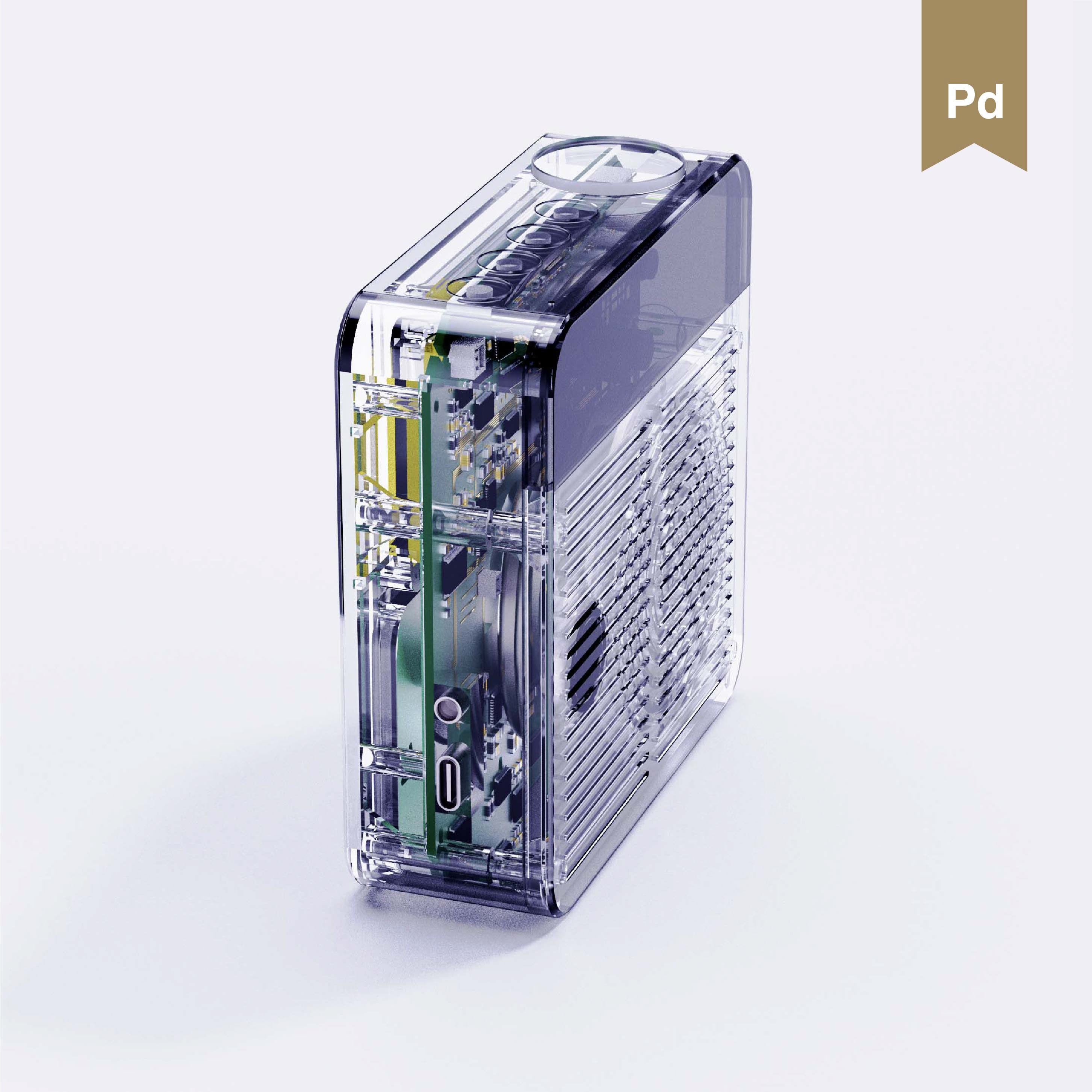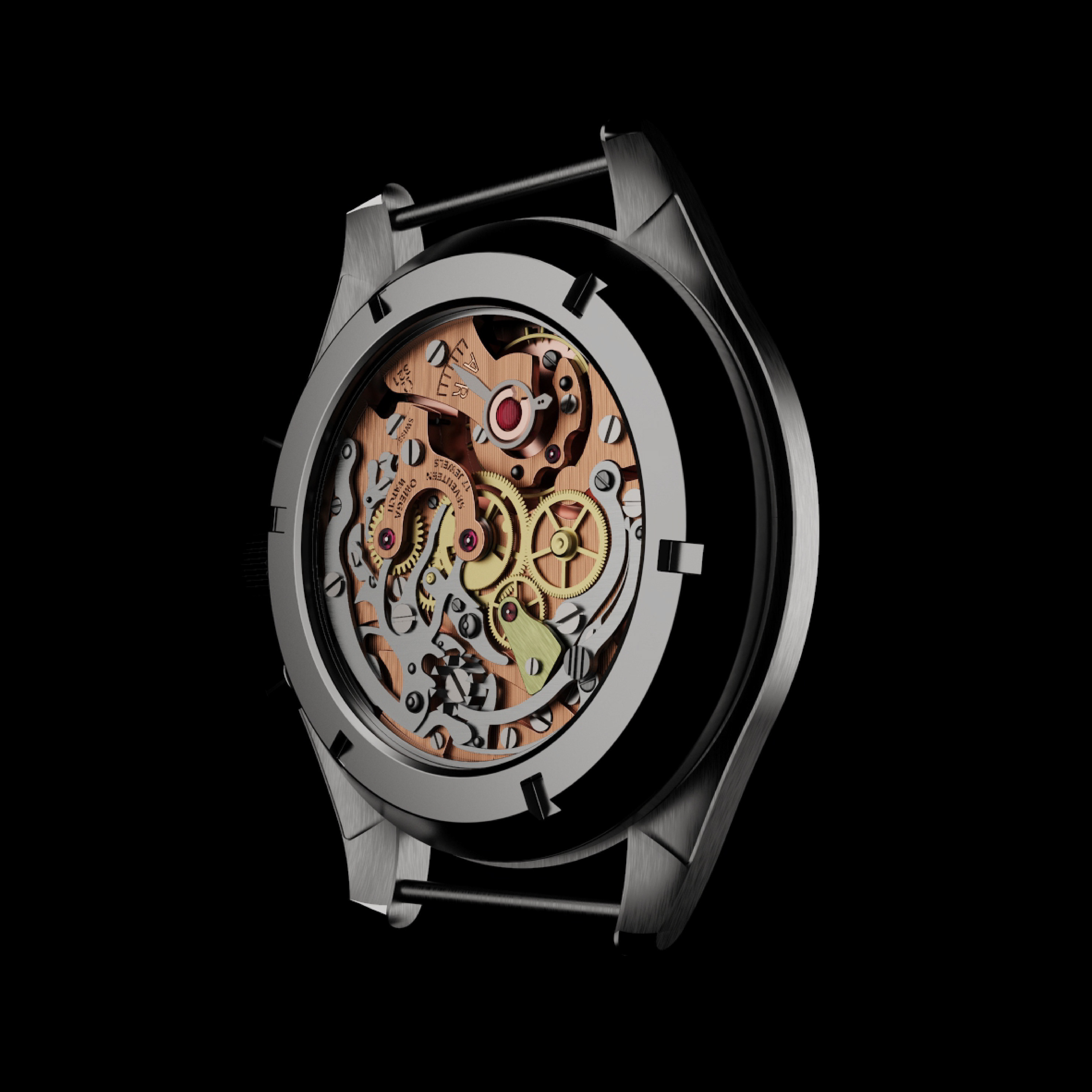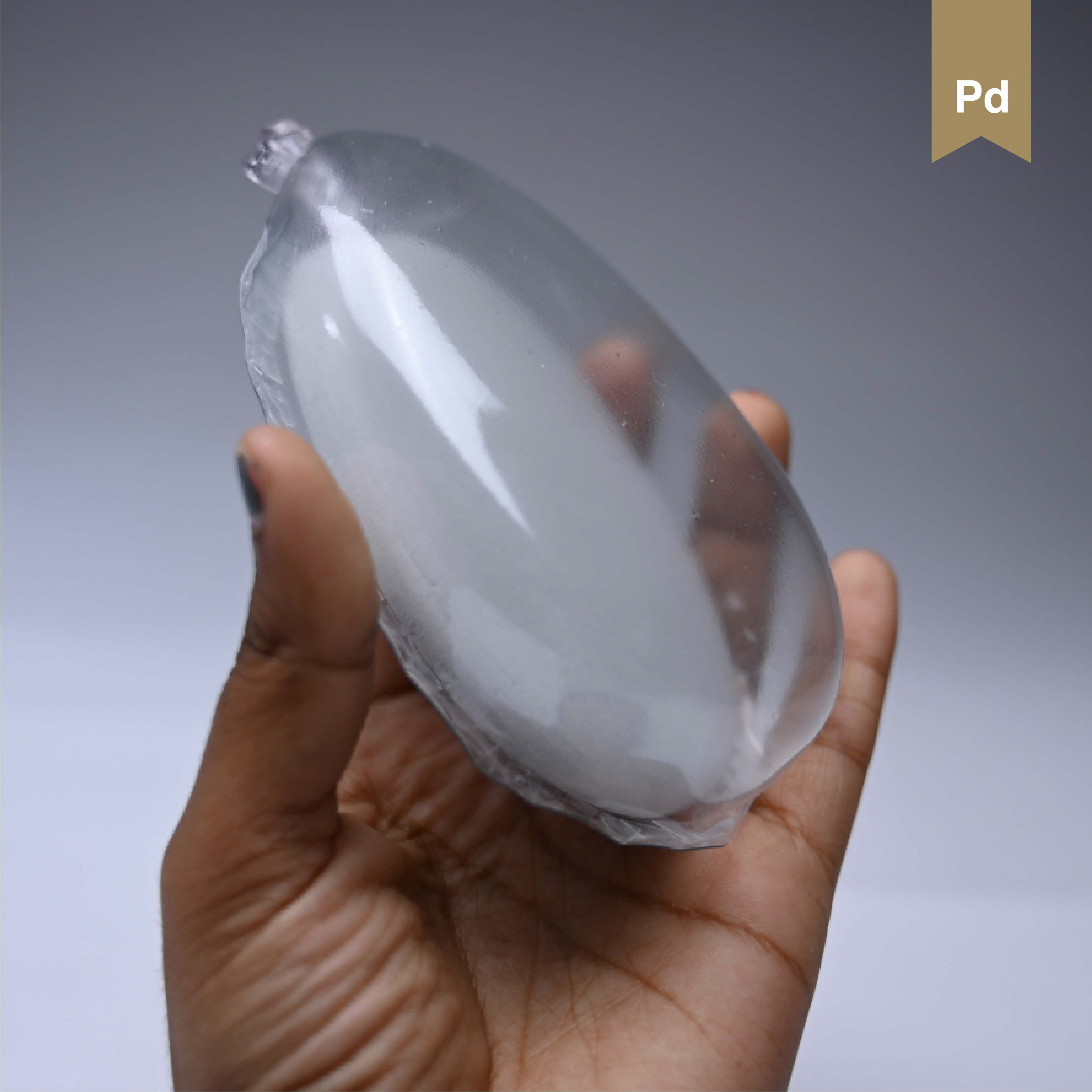ST[ILT]
Self-stabilising mouse for people with hand tremors
RISD | 1 month
Individual
Problem
More than 10 million people suffer from essential hand tremors - people with Parkinson's and post-stroke patients to alcohol withdrawal, there are levels of tremor intensities. The accuracy, precision and external form of commercial mice and cursor creates the problem with these users.
Keywords
Inclusive design | User-centric research | Consumer electronics | Works-like prototype
Recognition
Behance feature - 2023 - Product Design category
Concept
The ST[ILT] mouse addresses this by incorporating stabilizers and ergonomic design, aiding more controlled use. Its side palm placement minimizes tremors, and tilt click action reduces erroneous clicks. Equipped with tremor-filtering sensors, the mouse ensures comfort during prolonged use, significantly enhancing computer interaction for users with involuntary hand movements.
This is how our cursor moves on the screen
This is how more than 10 million people’s cursor moves
Research
Identifying key pain points for a person with Parkinson's when it comes to using a mouse informed a variety of concepts and interventions that improves the user experience for the user.
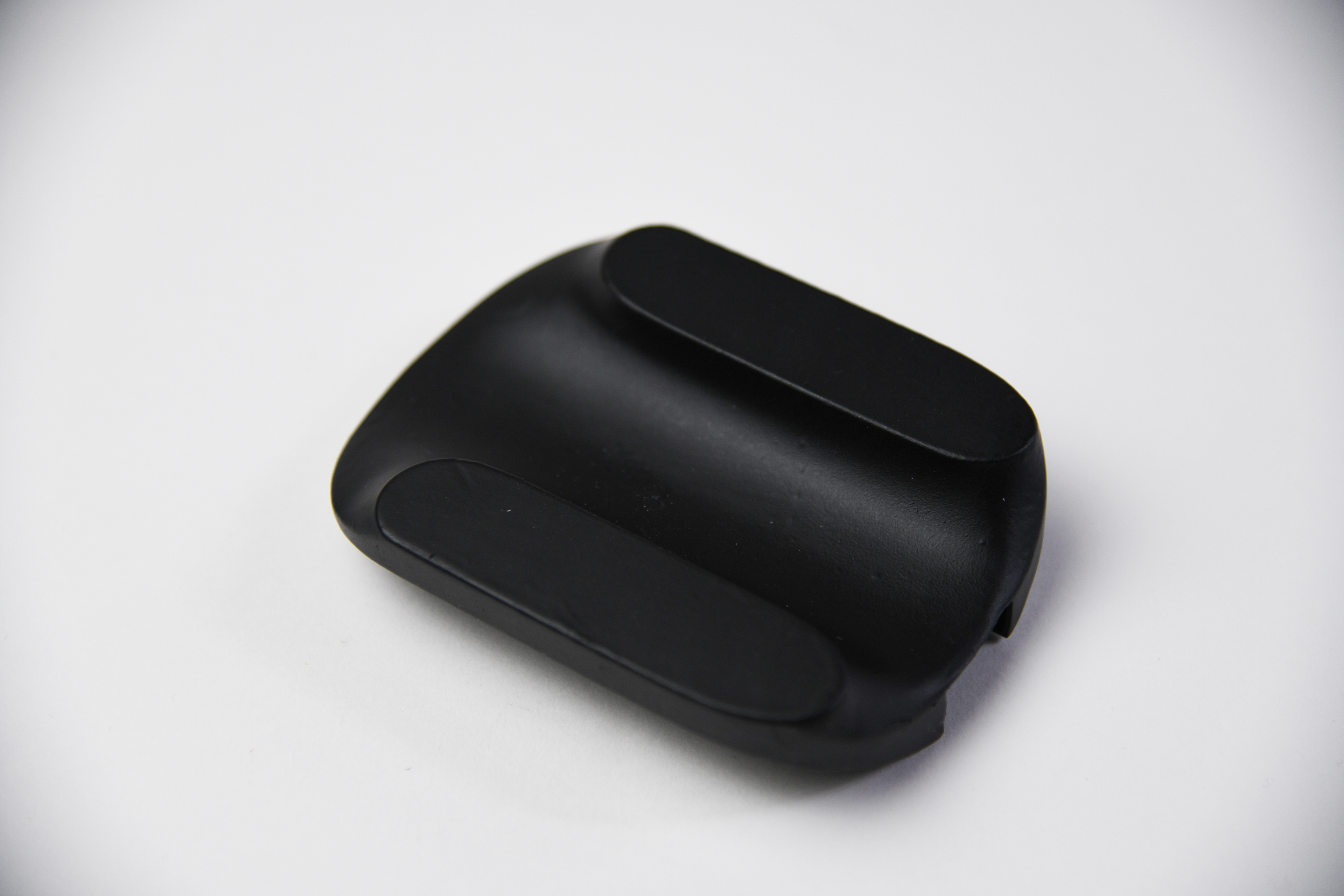
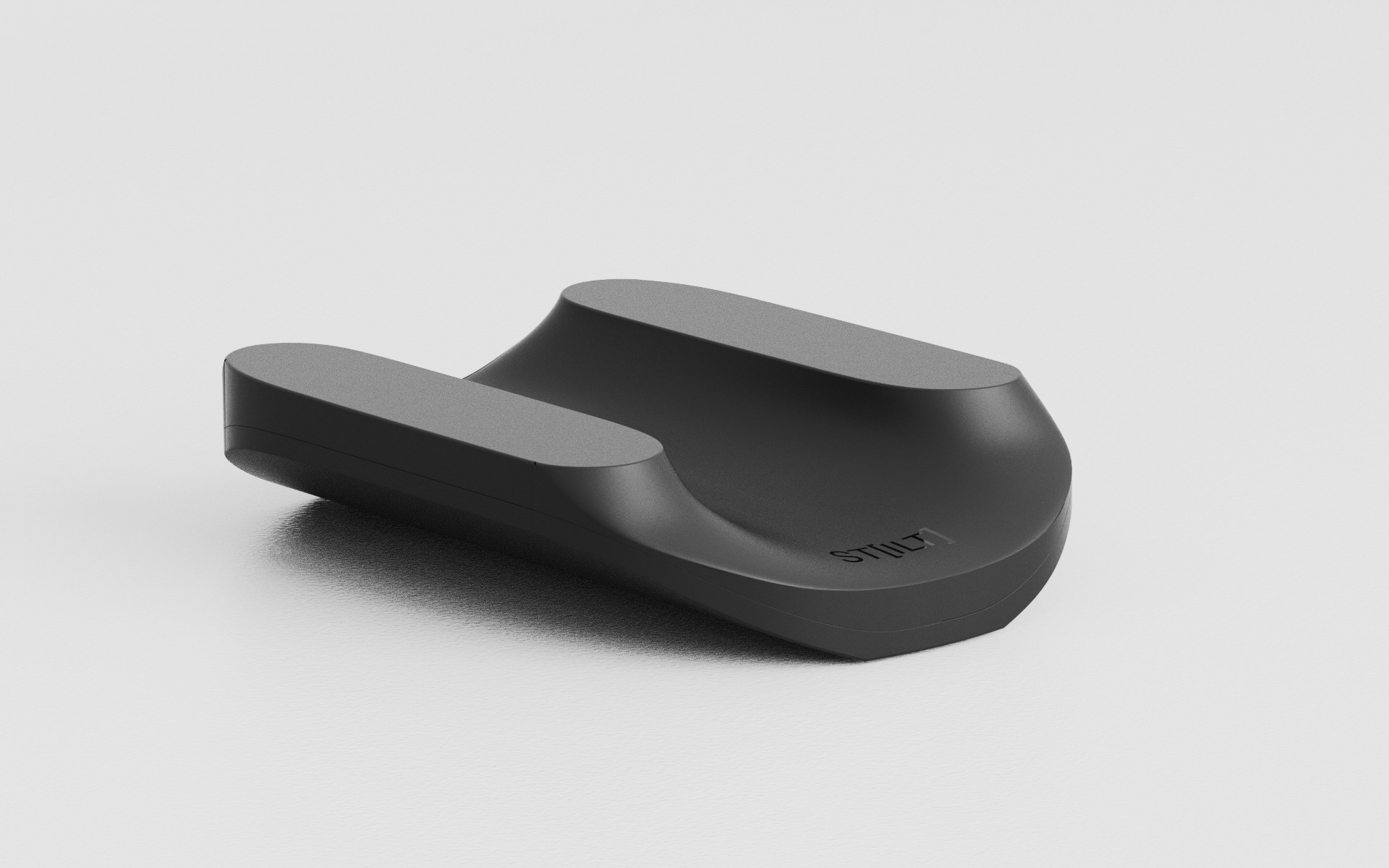
3D resin print with spray-painted matte black finish 3D modelled in Rhino and rendered in Keyshot
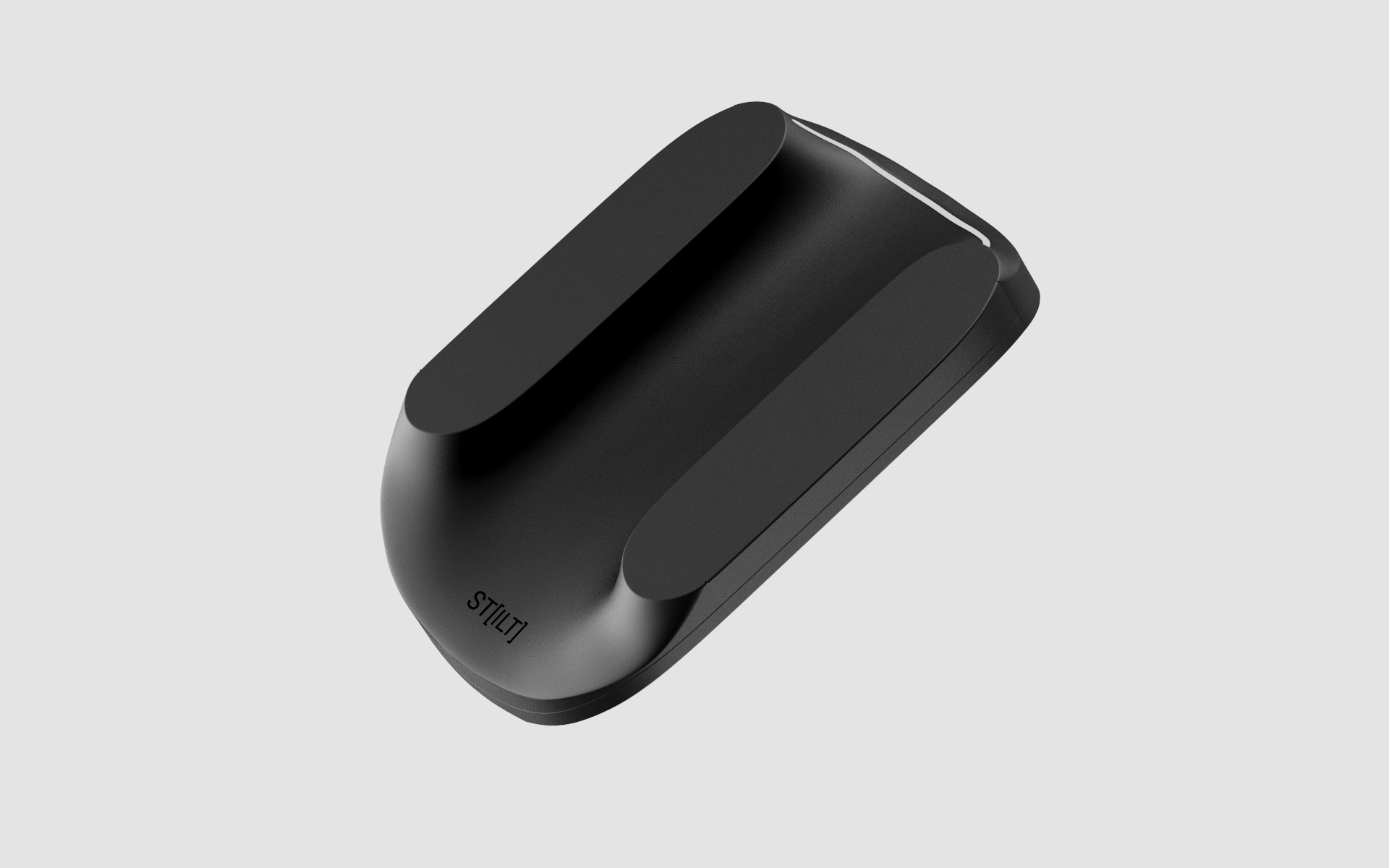
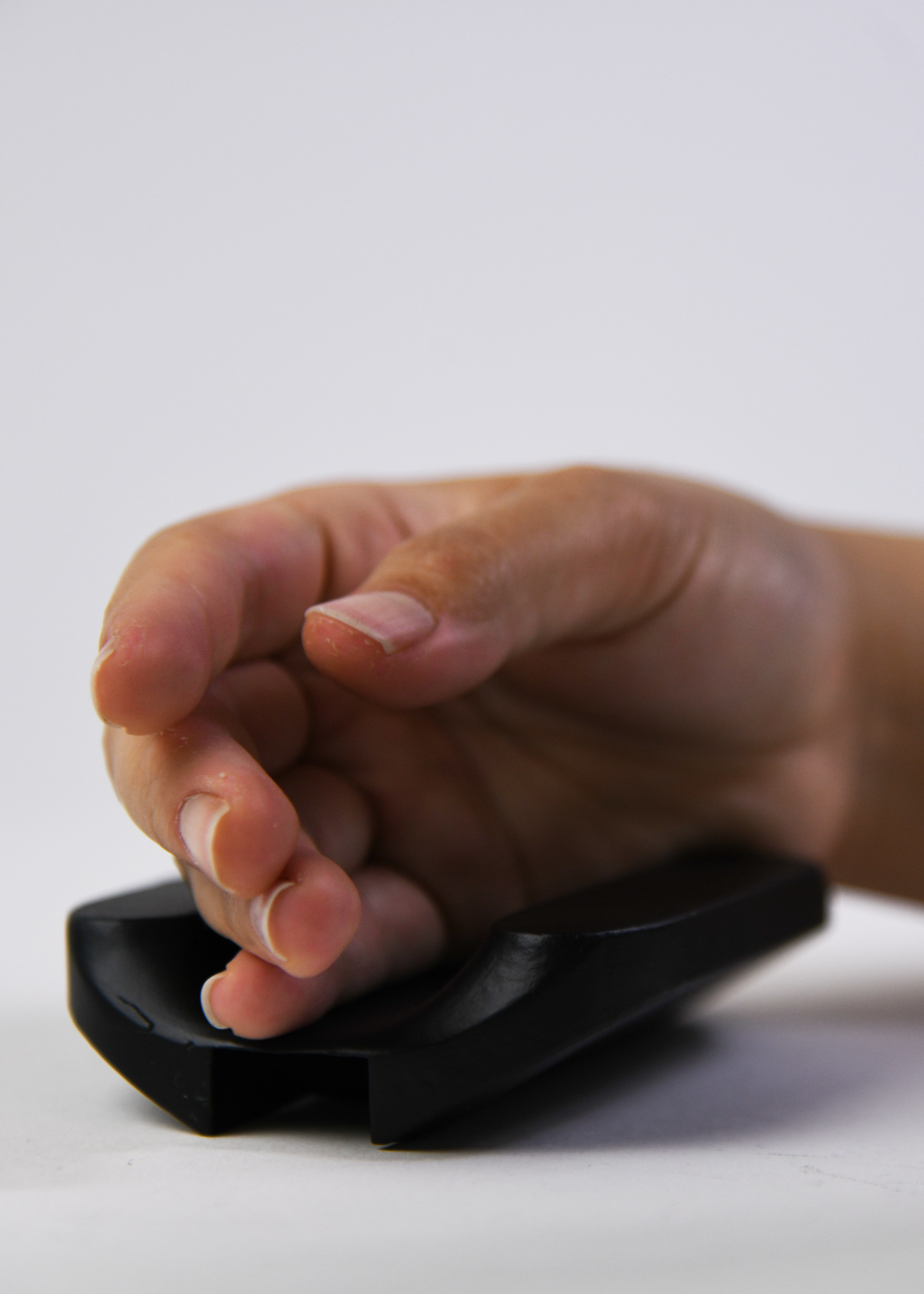
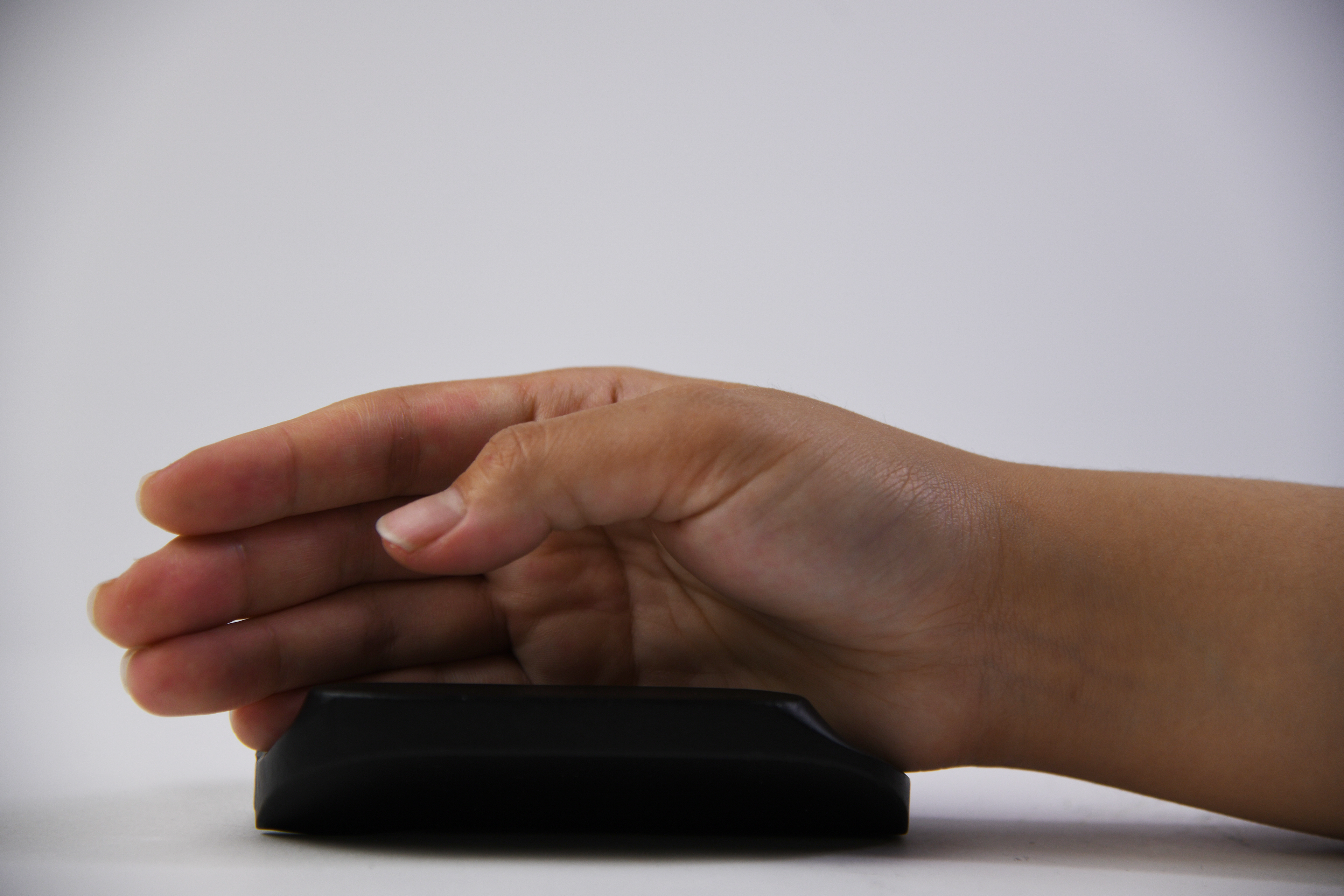
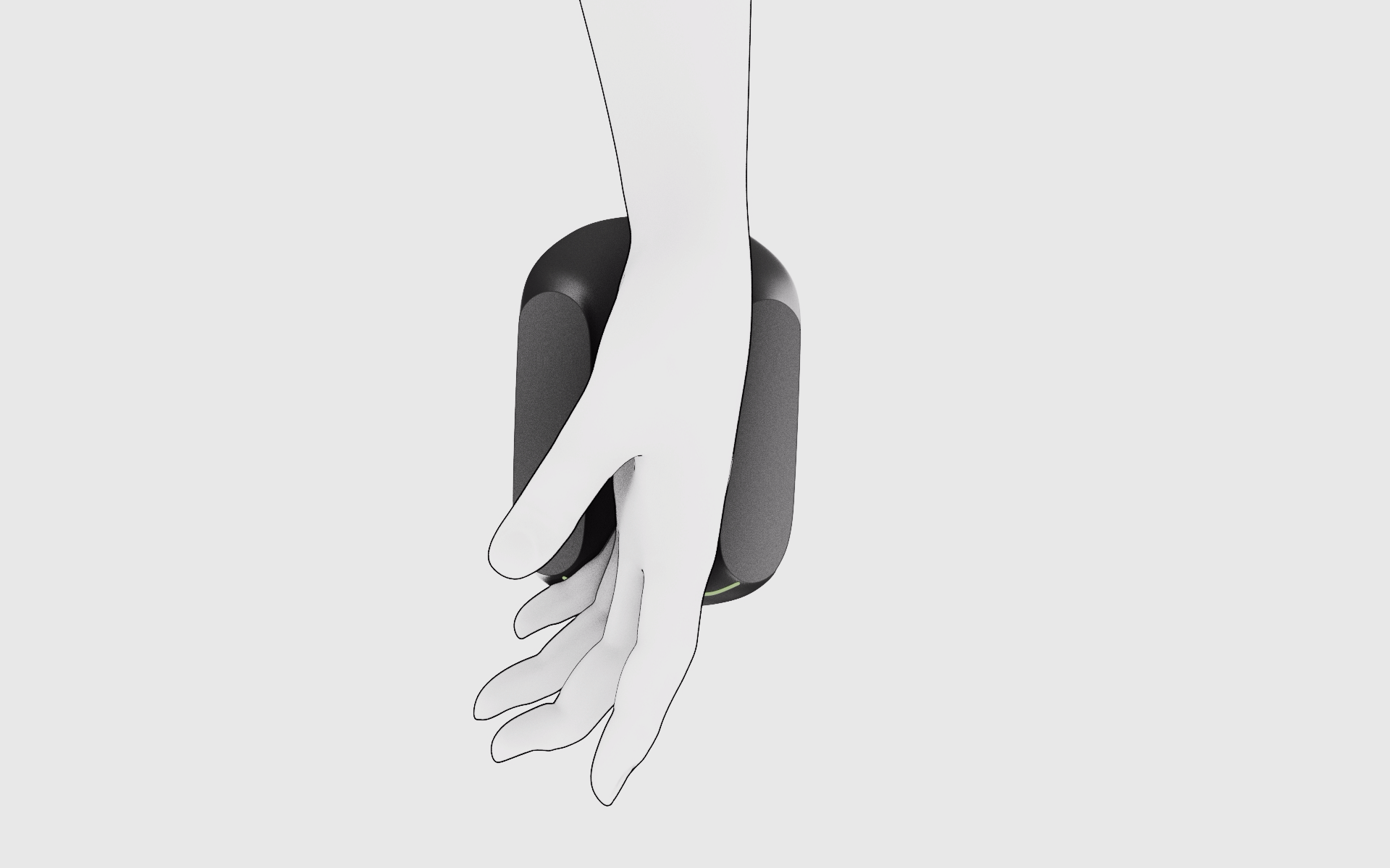
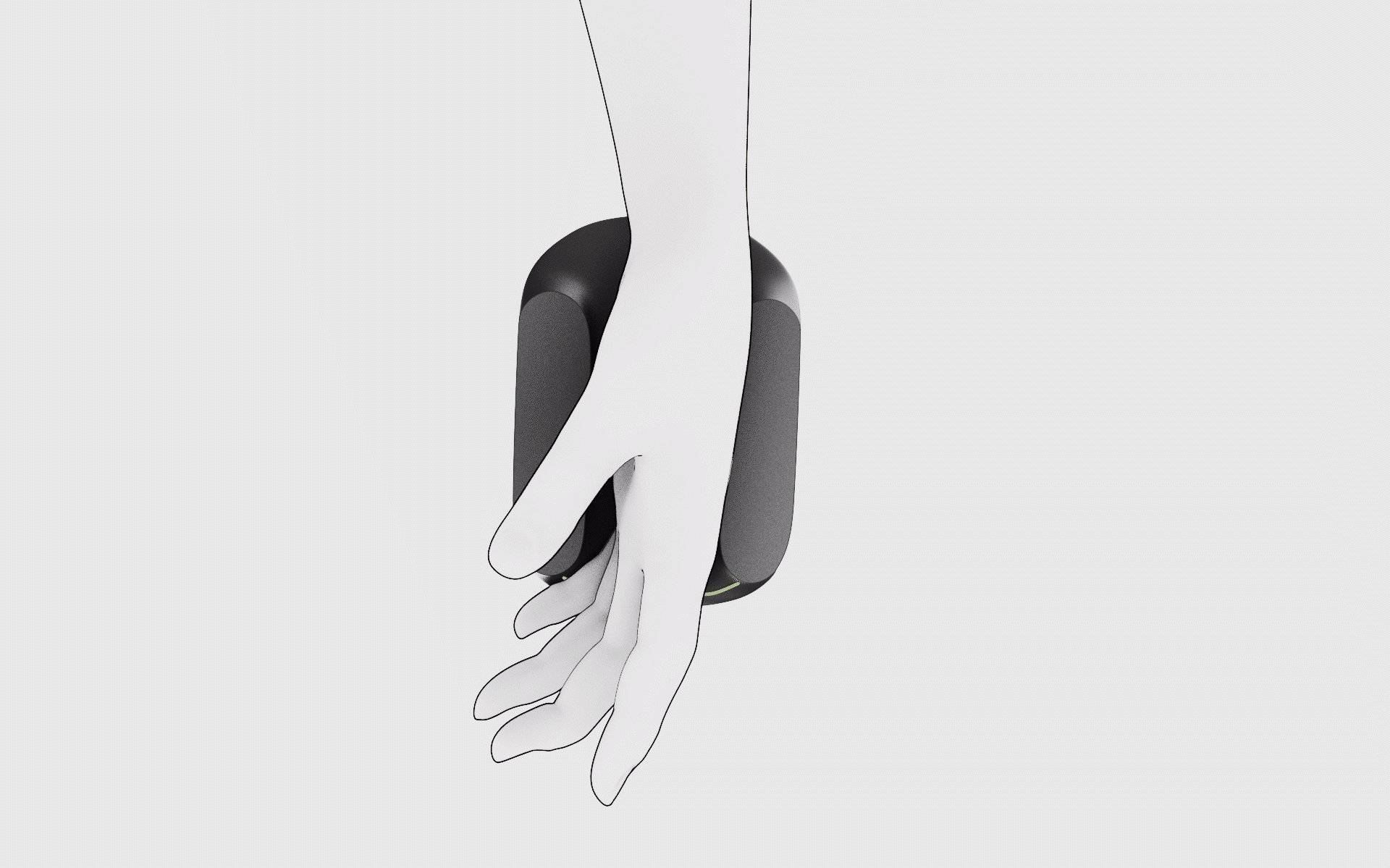
Single click - right and left Double click - right and left
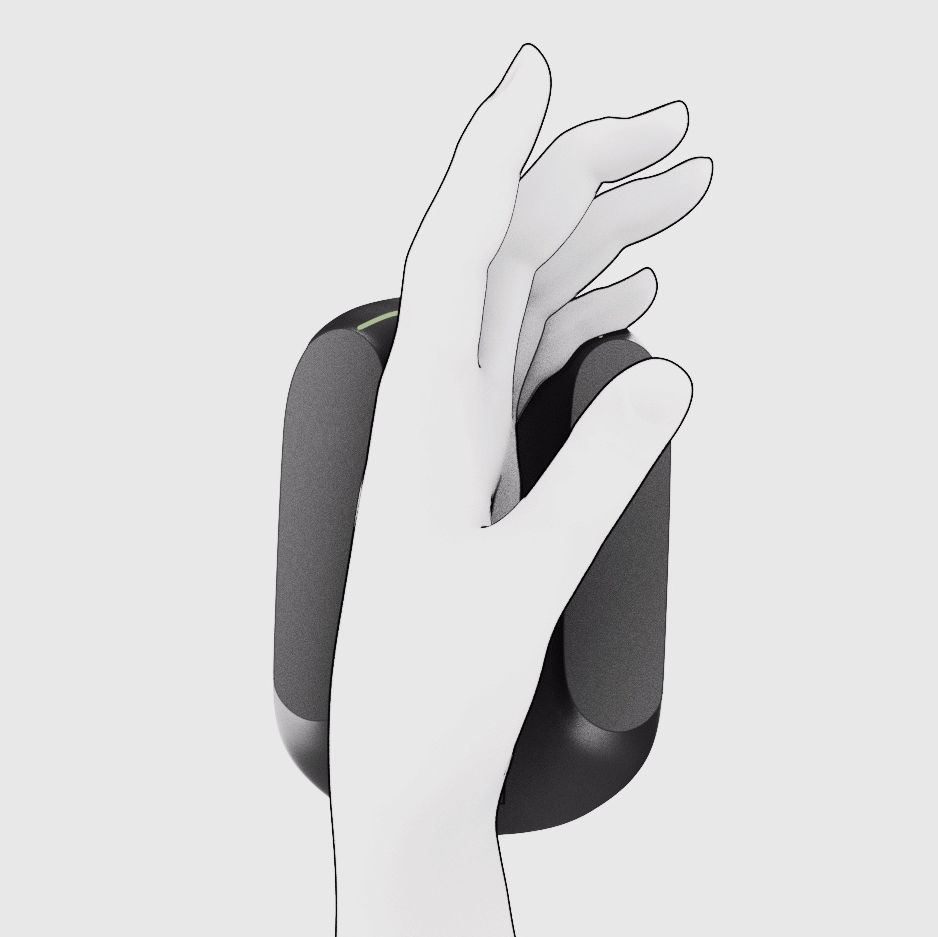
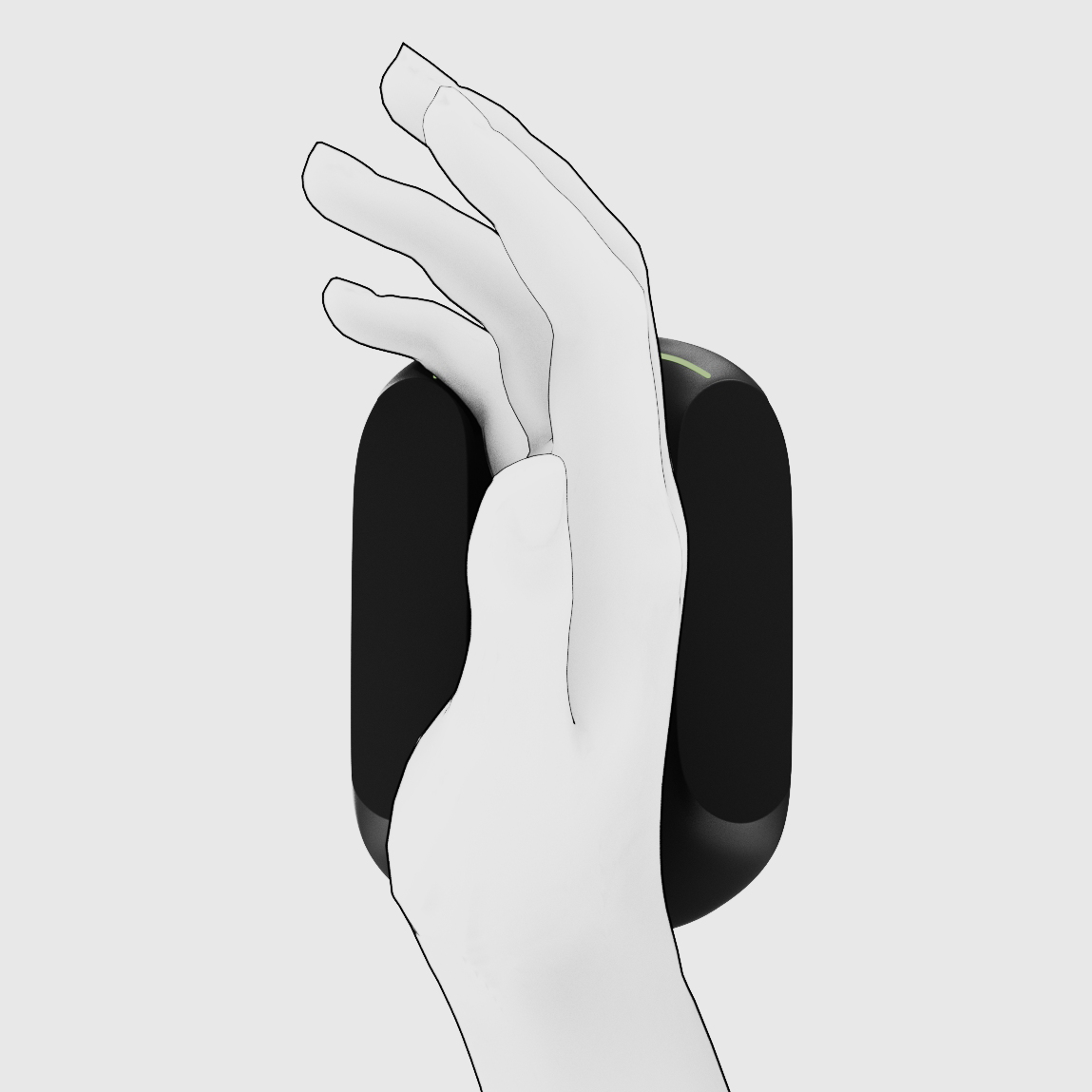
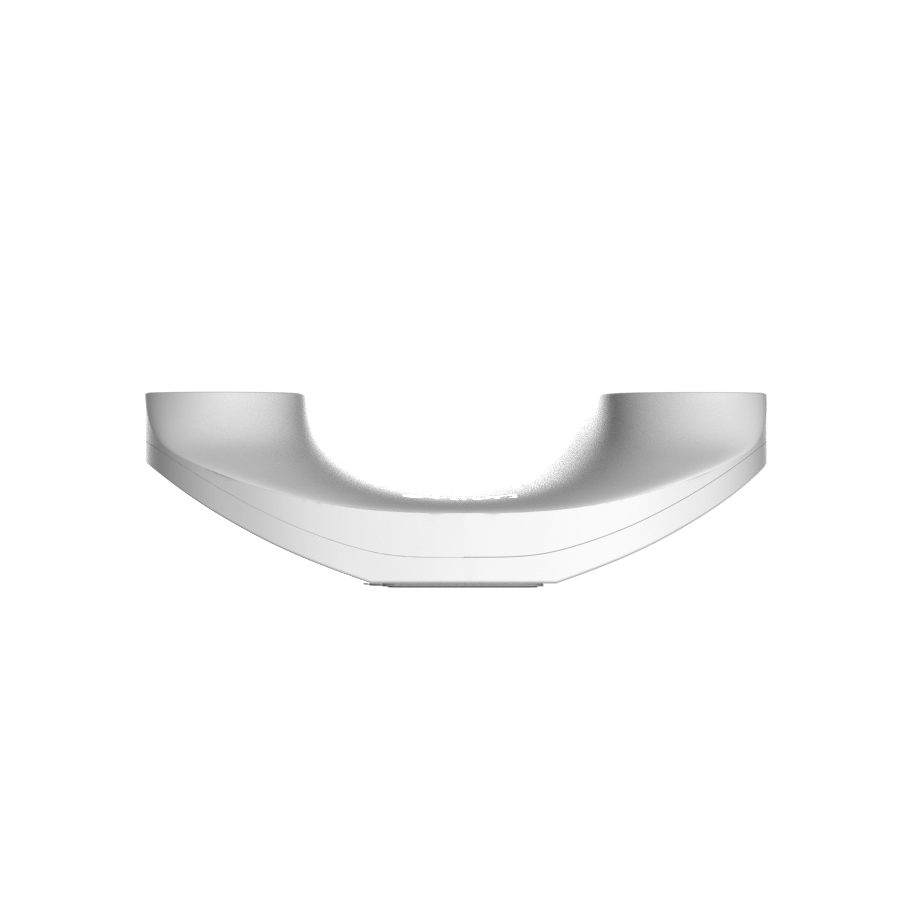
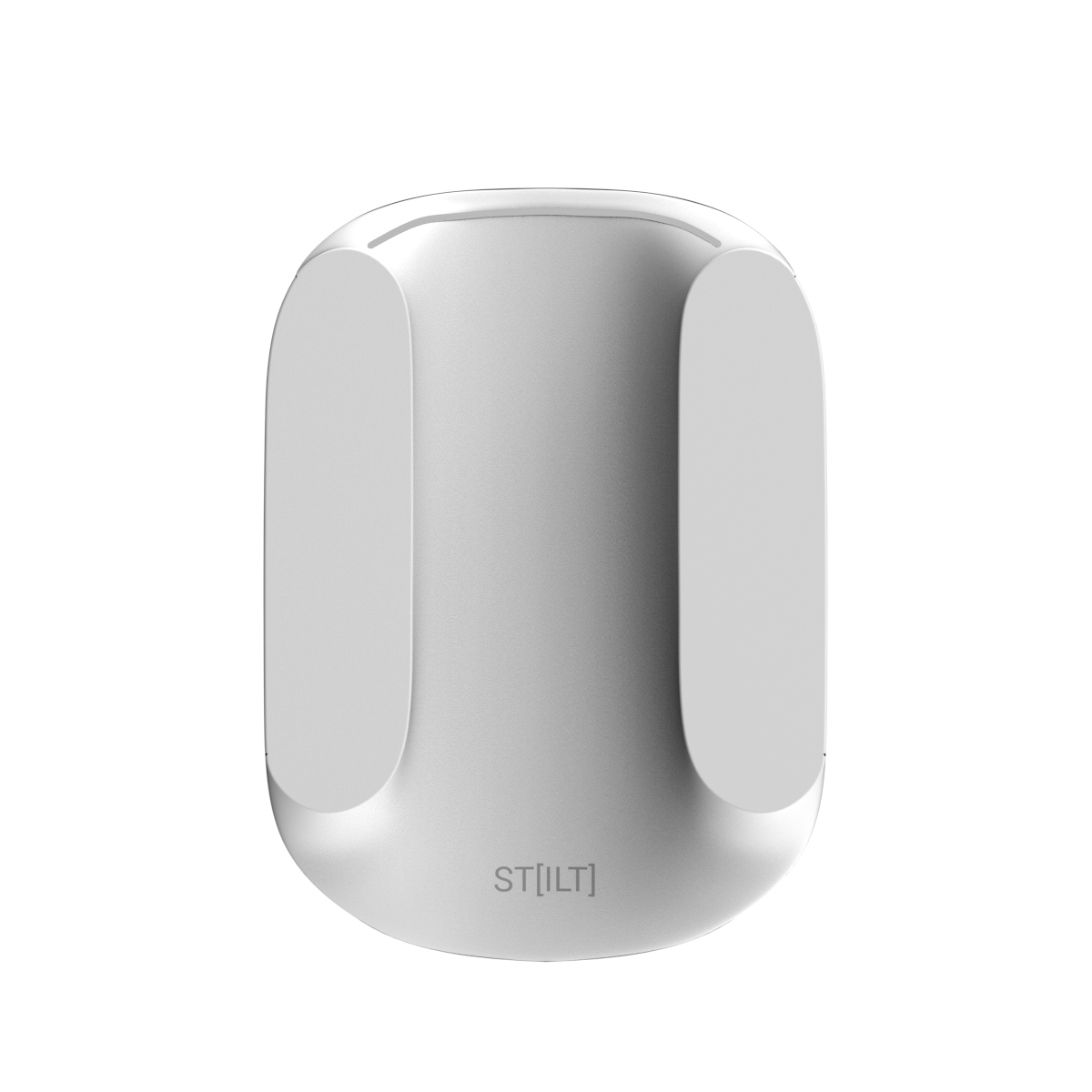

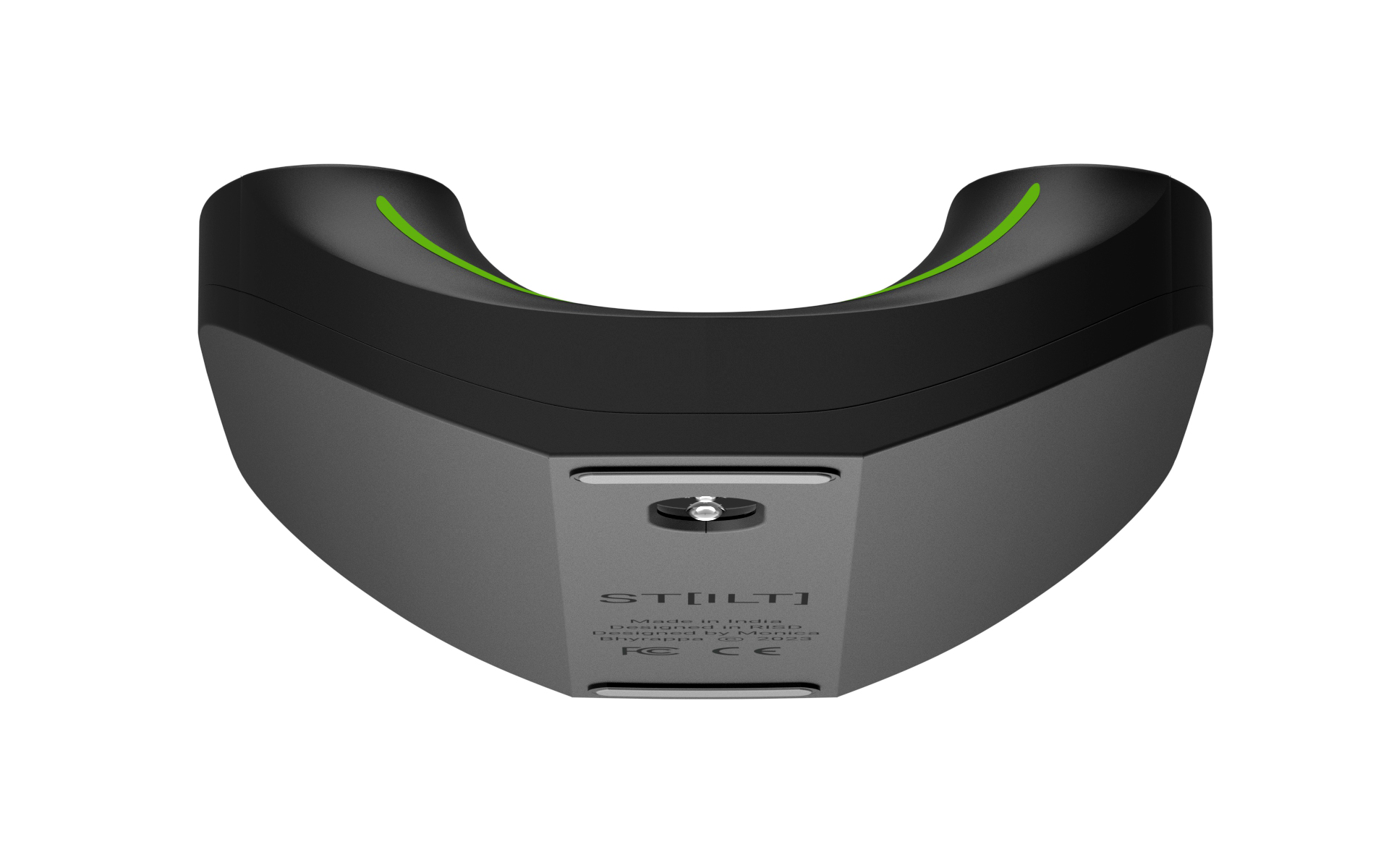
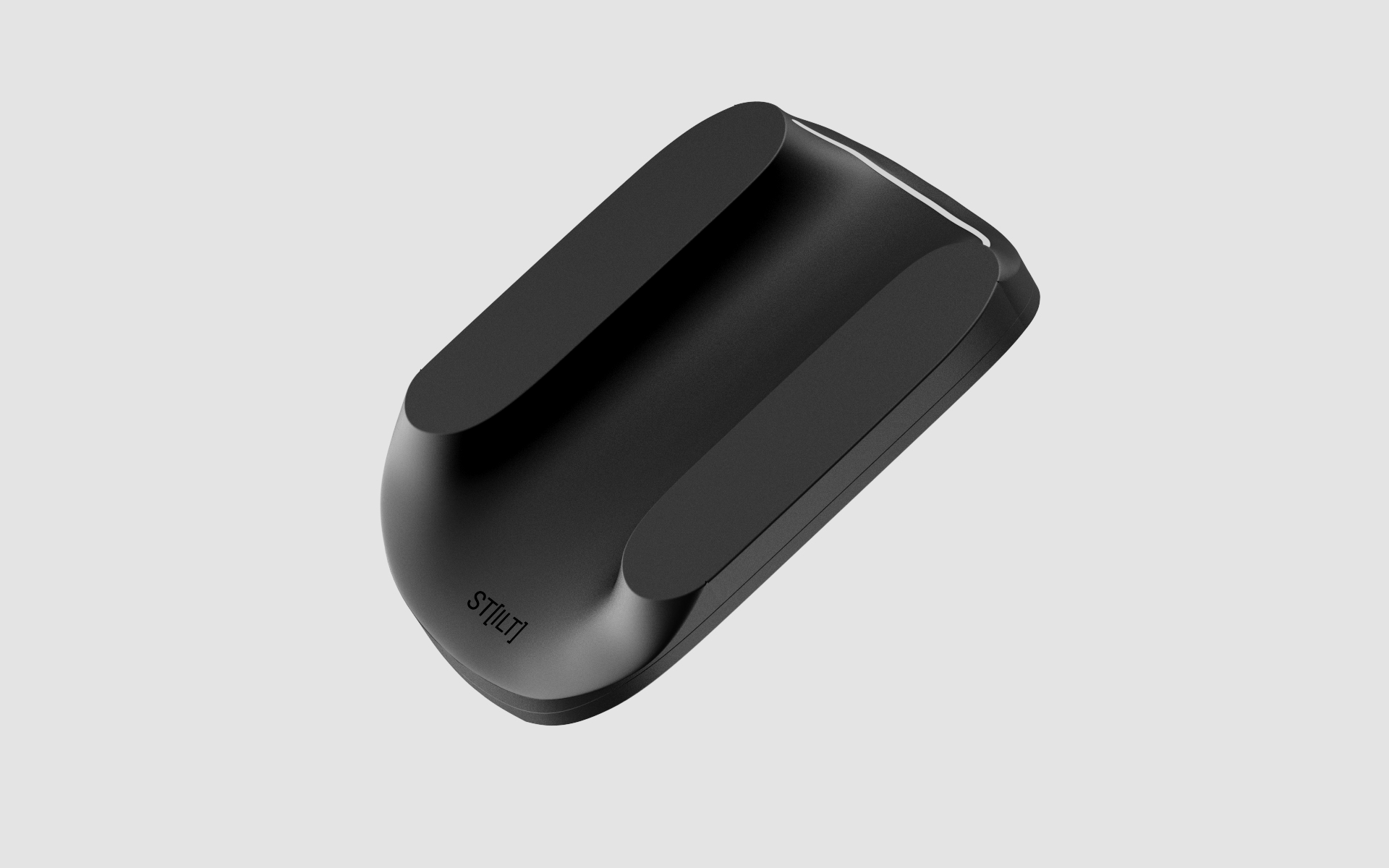
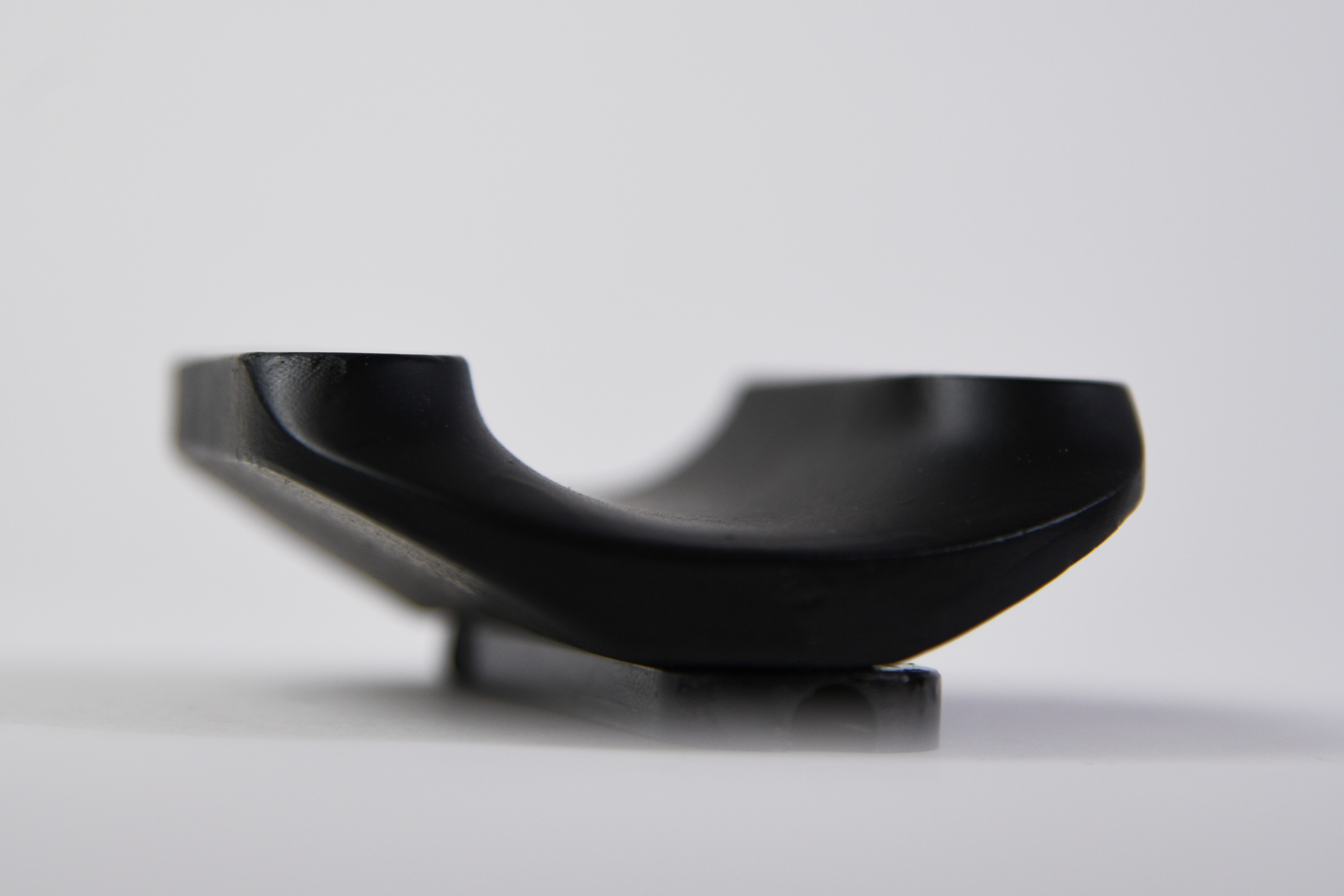
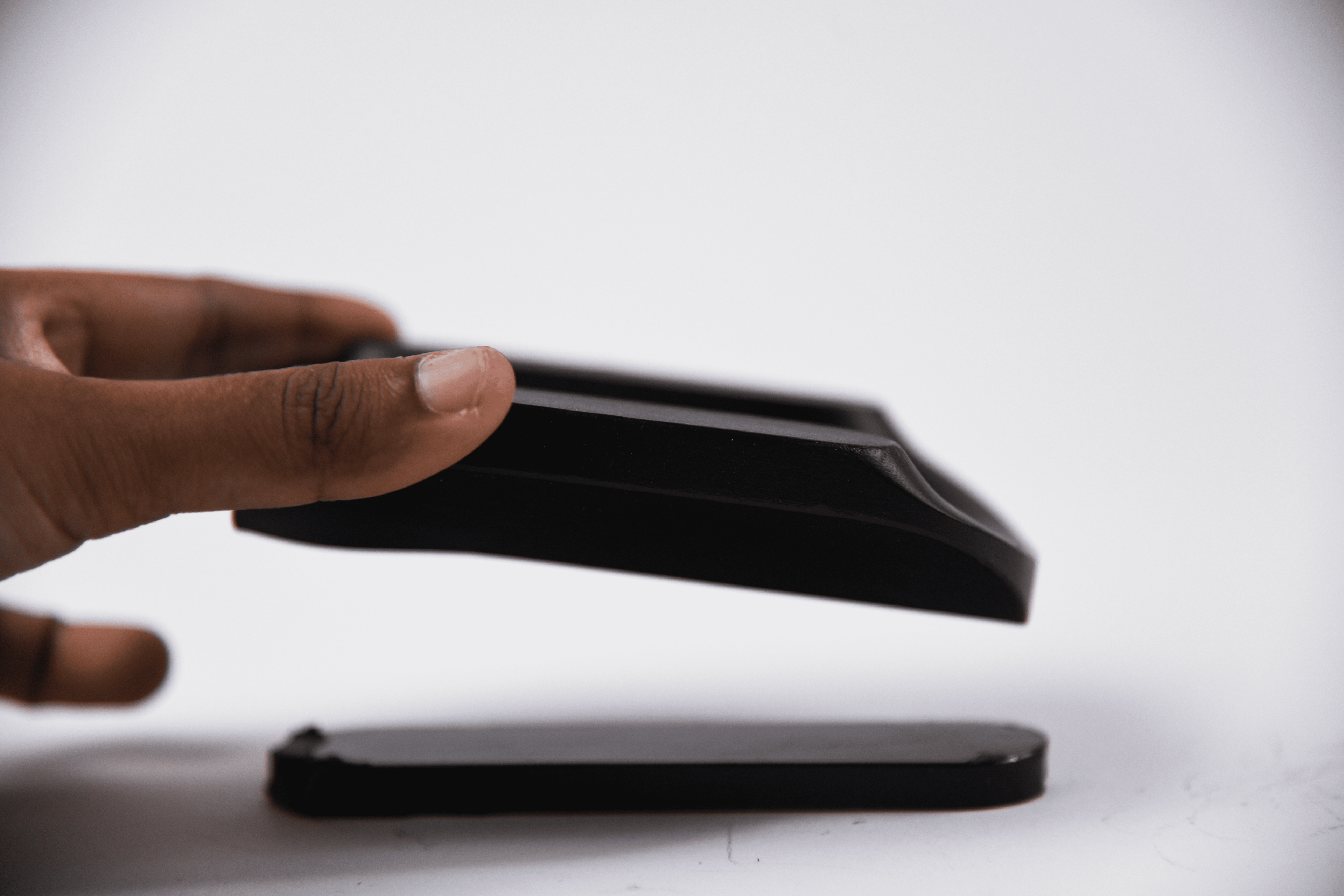
2D to 3D
The initial sketch concepts drew inspiration from power grips and ergonomic-shaped mouse designs, such as the "ball grip" spherical mouse and the cylindrical grip-based vertical mouse. However, with feedback from an occupational therapist, insight into neutral hand posture and surface support was gained. The concept of having power grip postures hand an adverse effect on the tremor due to the additional pressure that is required.
The initial sketch concepts drew inspiration from power grips and ergonomic-shaped mouse designs, such as the "ball grip" spherical mouse and the cylindrical grip-based vertical mouse. However, with feedback from an occupational therapist, insight into neutral hand posture and surface support was gained. The concept of having power grip postures hand an adverse effect on the tremor due to the additional pressure that is required.
The tilt-click portion evolved through plasticine mockups. The channel in between the sides got deeper through iterations to provide more control of the mouse and support while tilting. The filleted rectangles are curved at the top to provide a hold for the pinky finger according to different user scenarios.
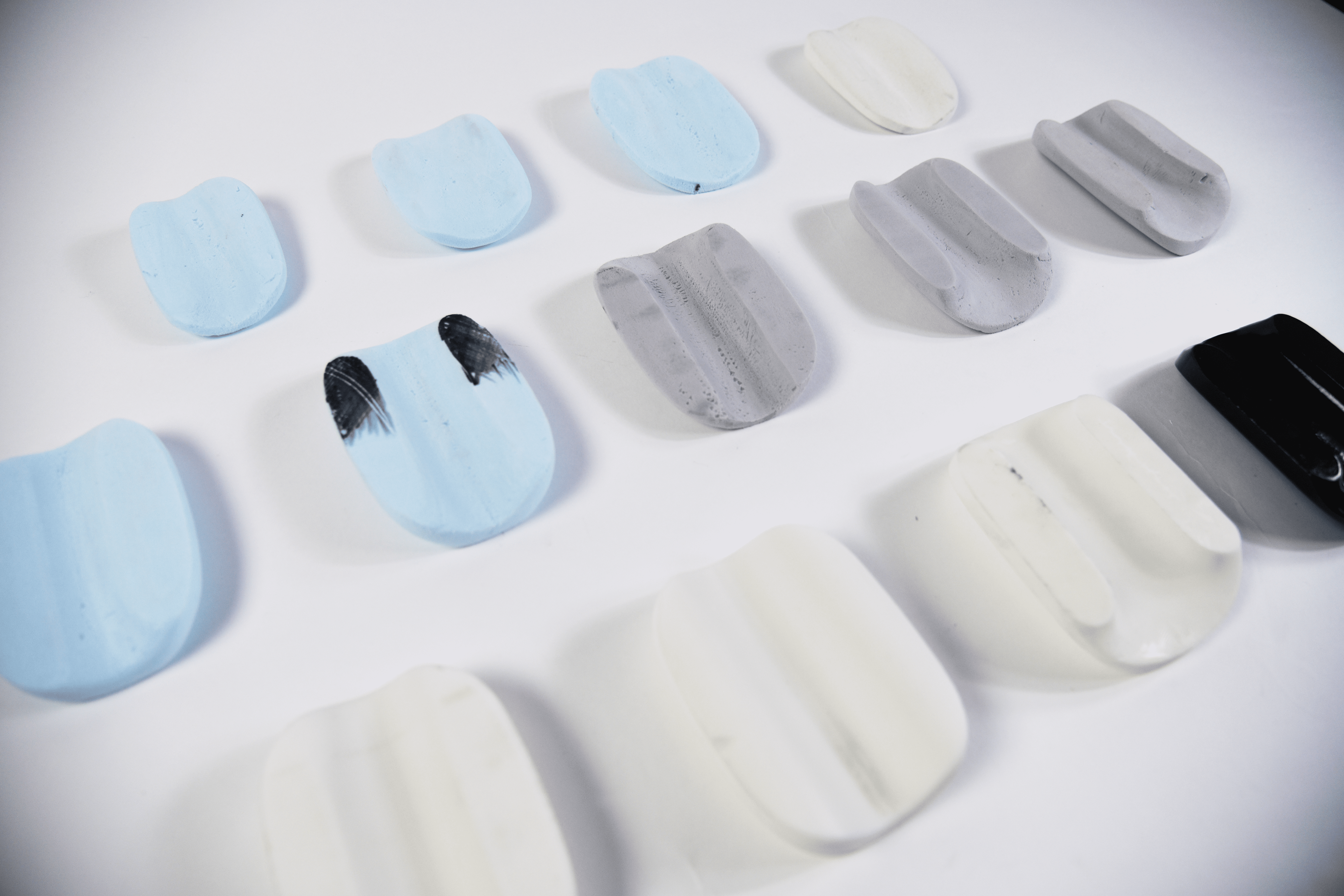
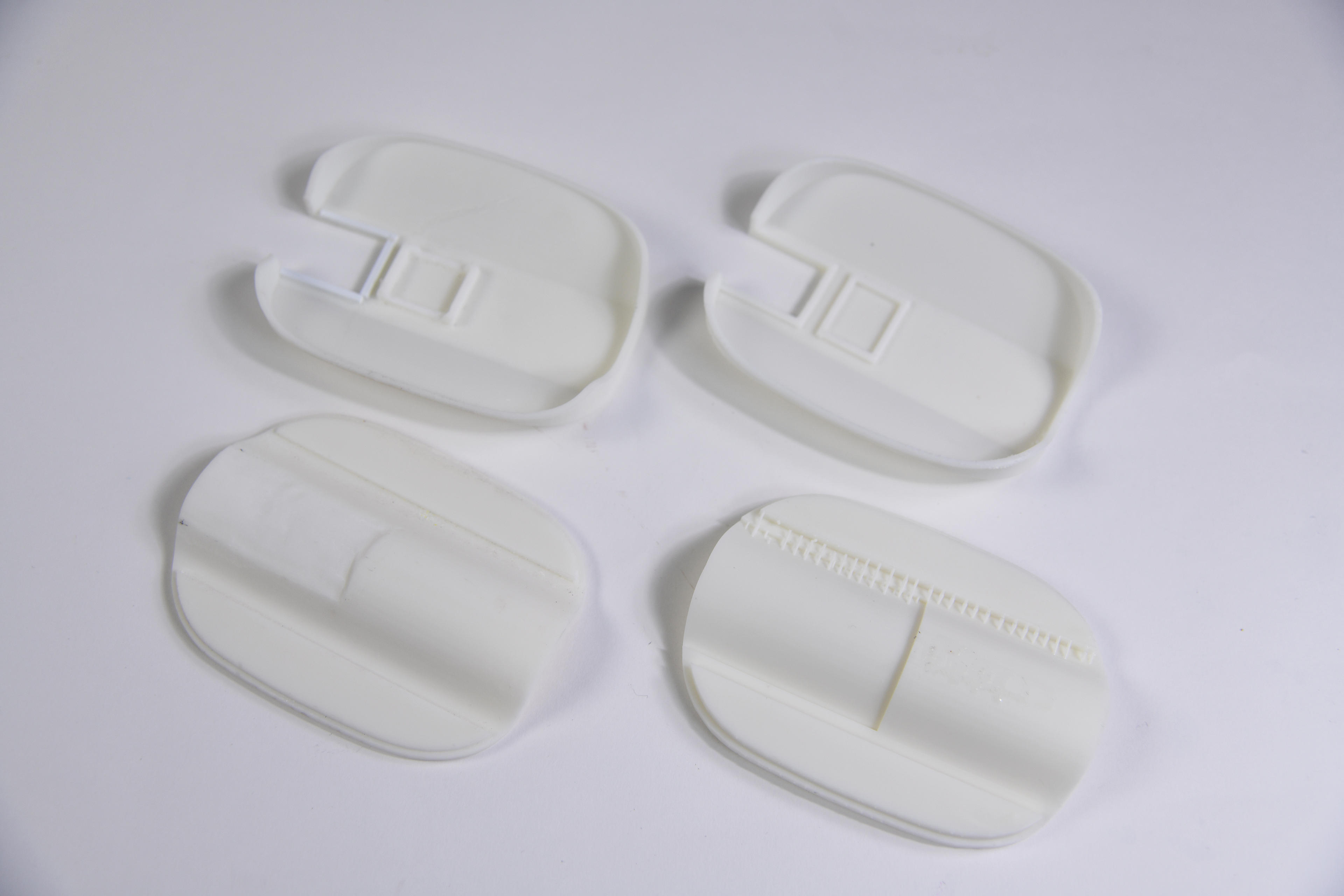
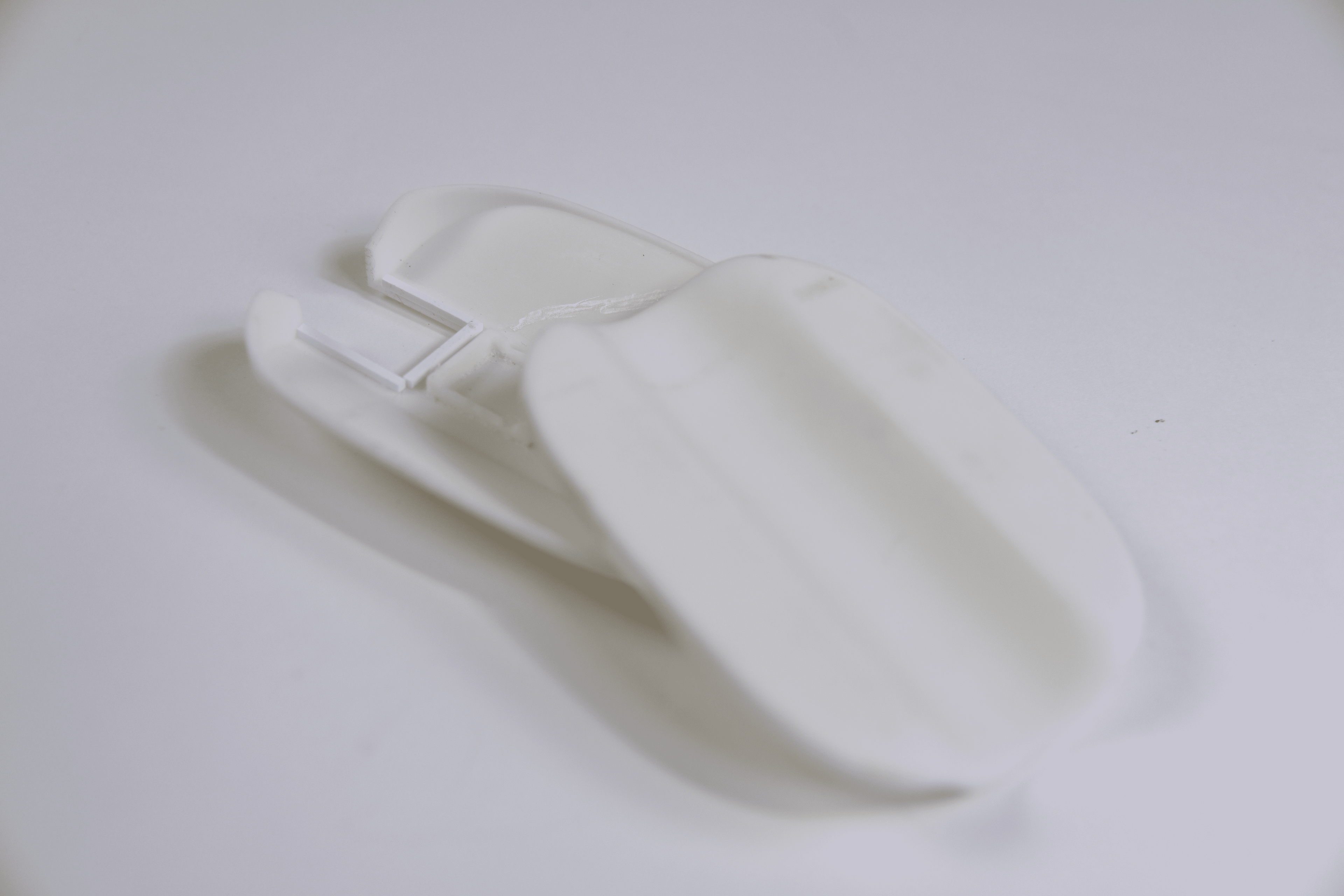
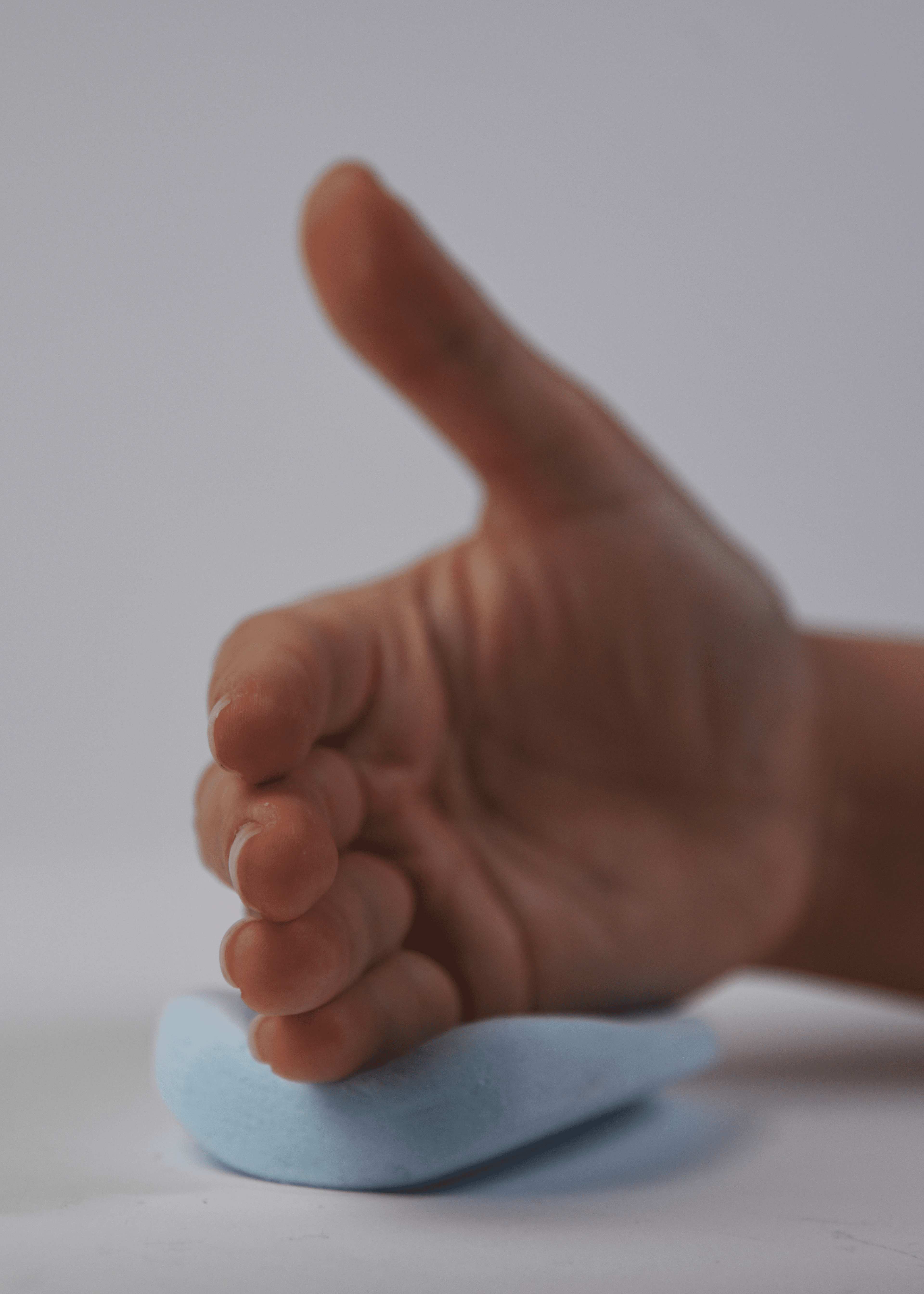
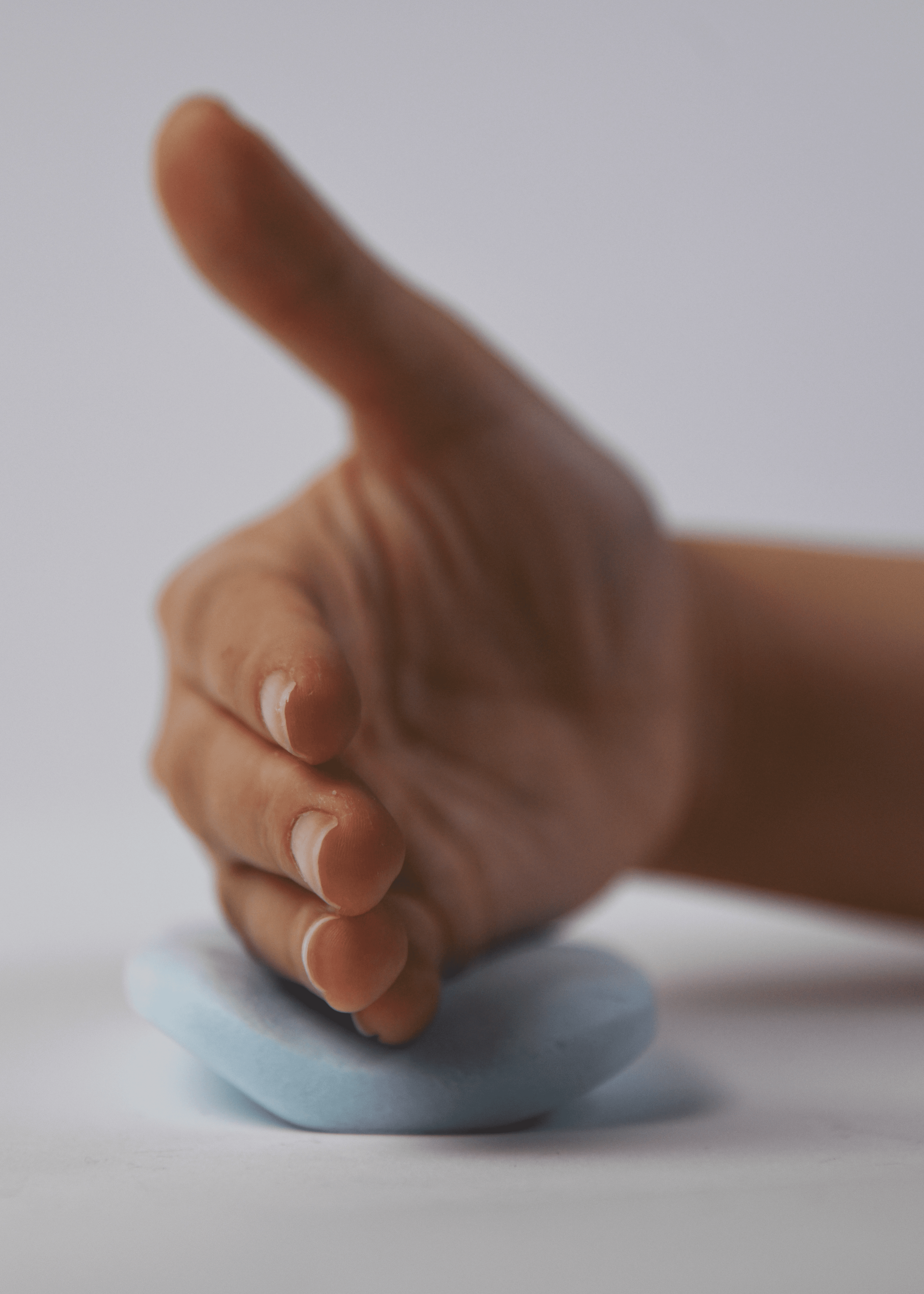
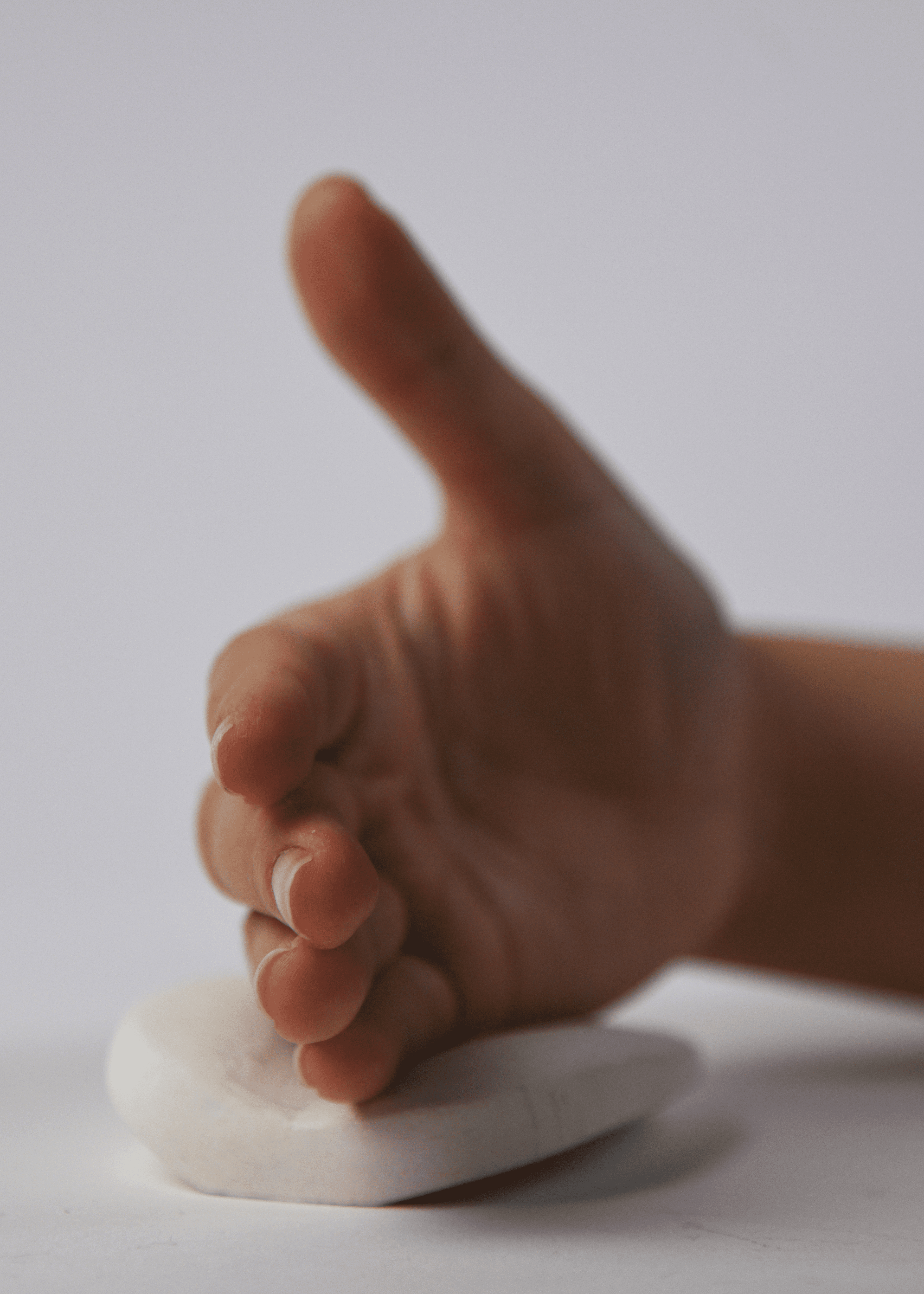
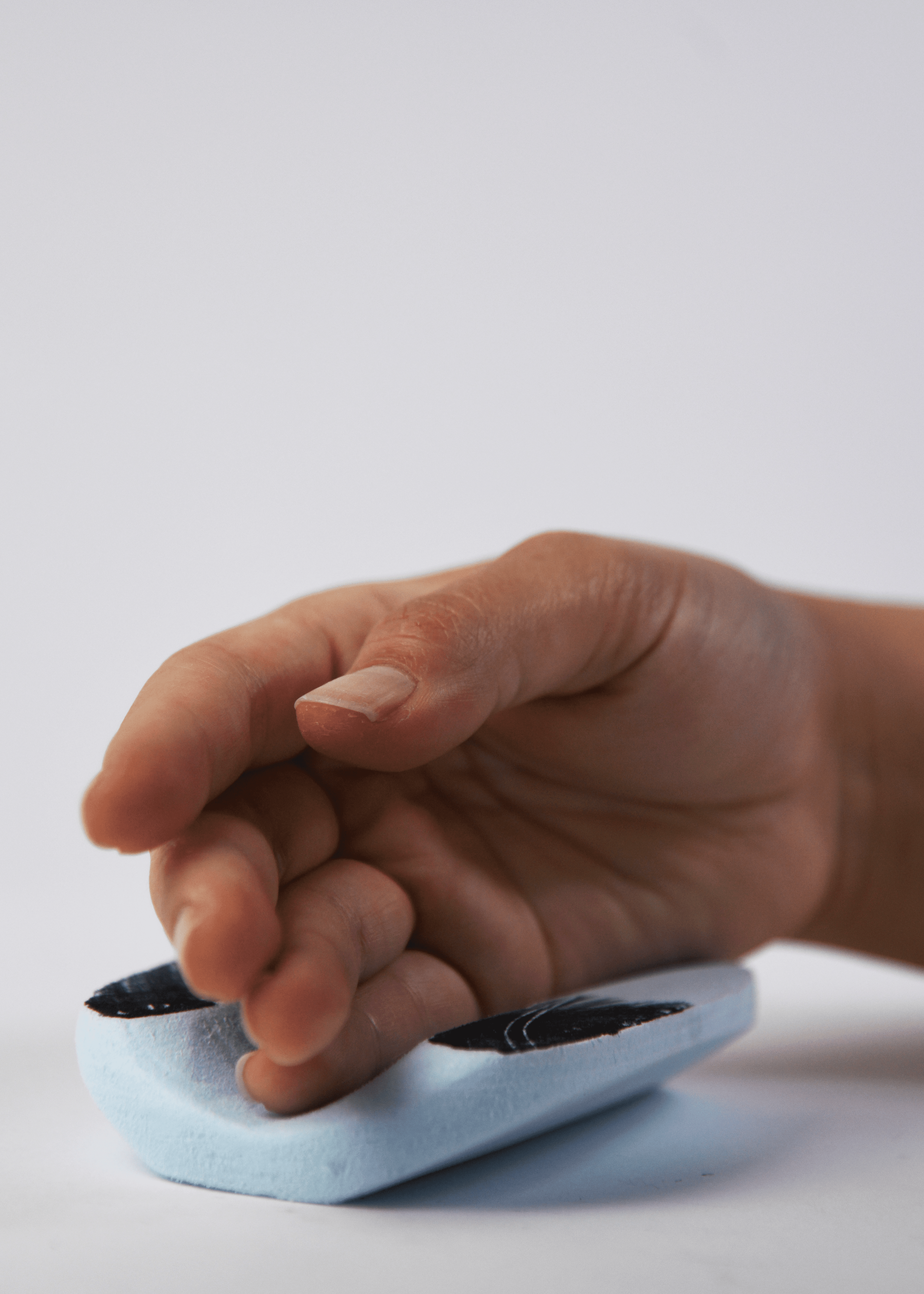
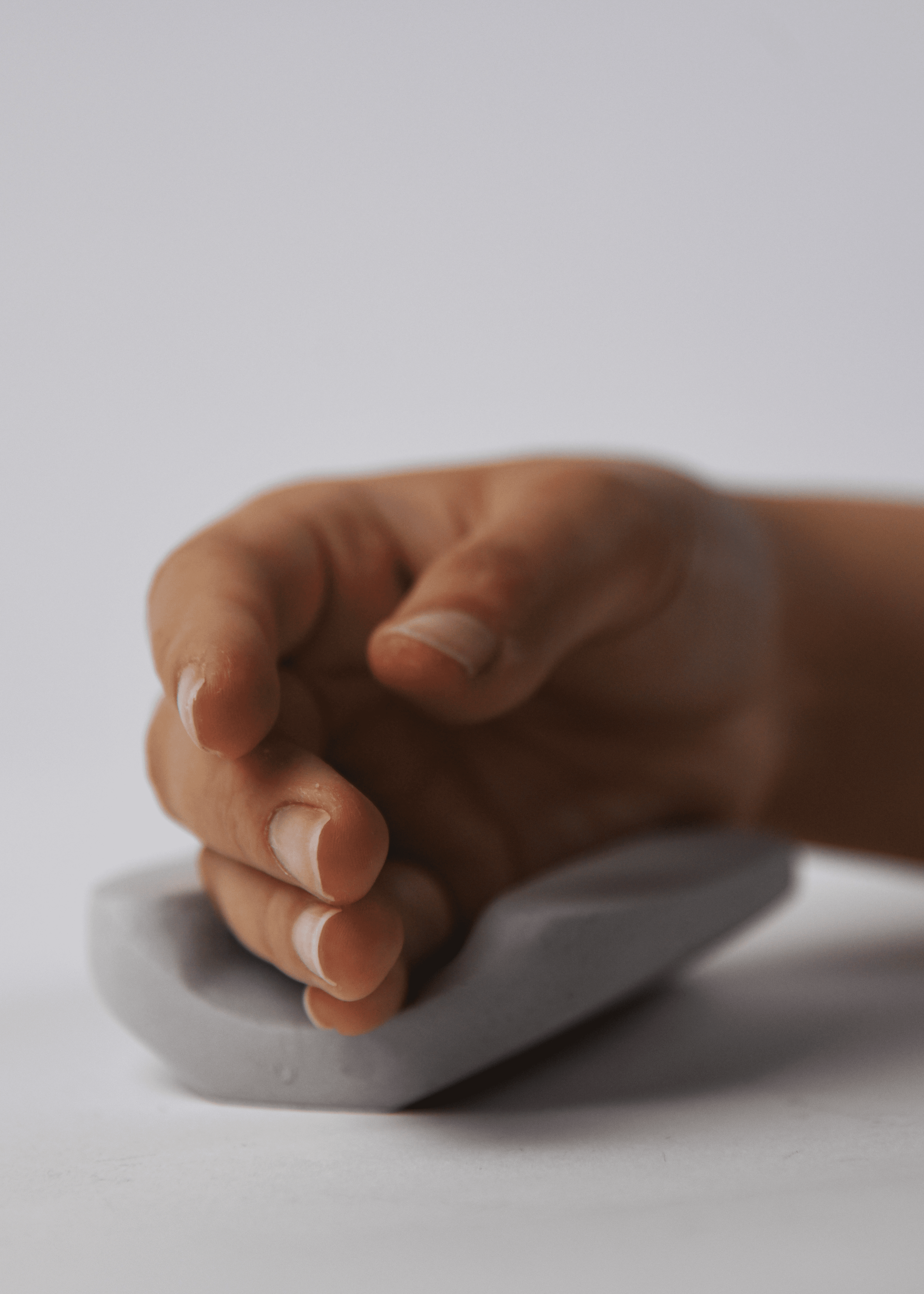
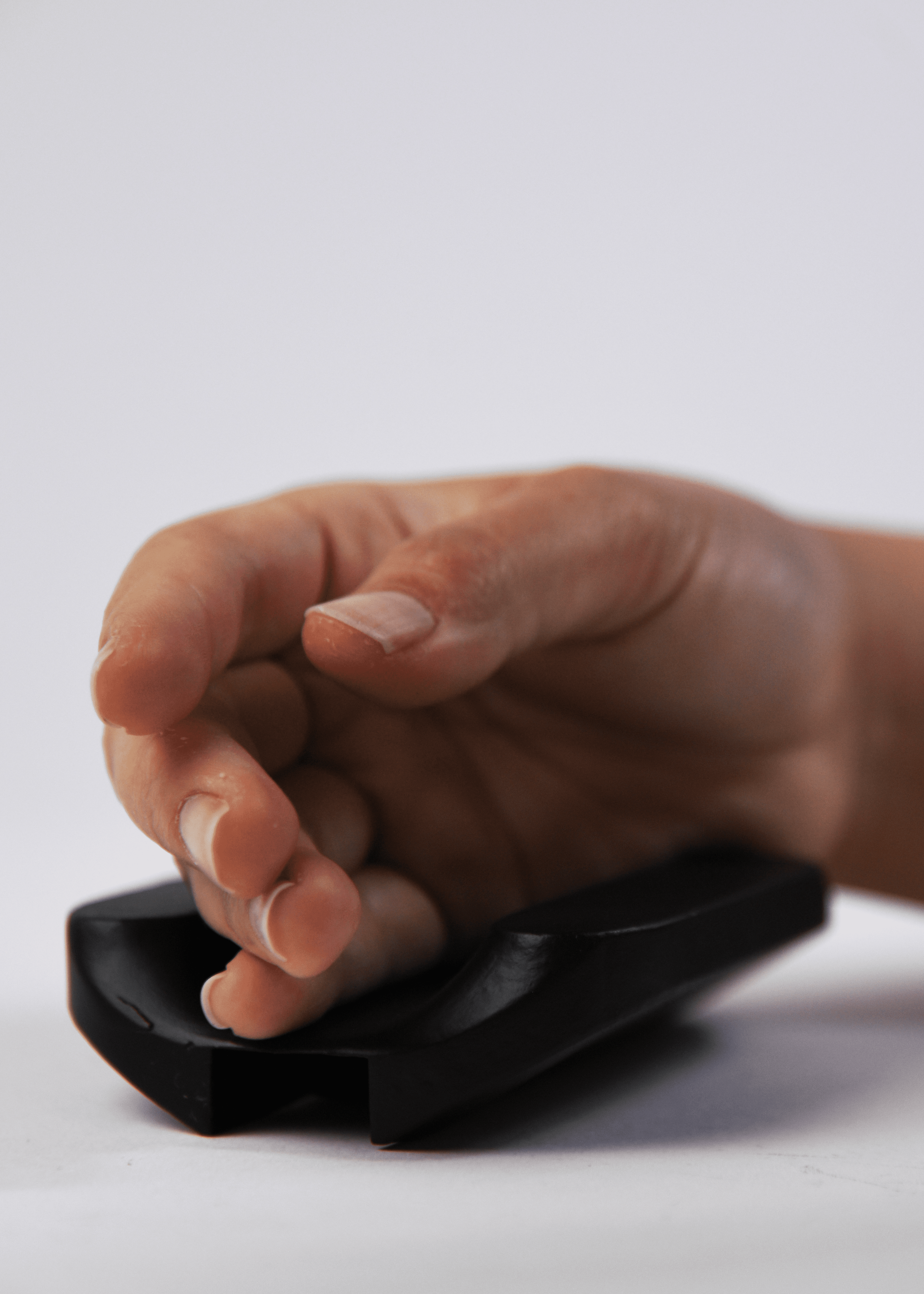
Physical computing
In order to make a working prototype, a Gyrosensor and optical sensor were required along with Arduino. The Gyrosensor with inbuilt accelerometer inside the mouse calculates the irregular tremor movements and counteracts on them through physical computing to provide a stabilised cursor. This filters out unnecessary tremor movements and provides smoother cursor movements and the optical sensor works like a normal mouse tracking the displacement in X&Y directions. With no experience in physical computing, it was tedious to make it work but with the help of ChatGPT4, the coding part was comparatively easier. Getting the right code, wrong connections, wrong sensors, desoldering and soldering to make it compact, it was a love-hate relationship but it was successful in the end!
In order to make a working prototype, a Gyrosensor and optical sensor were required along with Arduino. The Gyrosensor with inbuilt accelerometer inside the mouse calculates the irregular tremor movements and counteracts on them through physical computing to provide a stabilised cursor. This filters out unnecessary tremor movements and provides smoother cursor movements and the optical sensor works like a normal mouse tracking the displacement in X&Y directions. With no experience in physical computing, it was tedious to make it work but with the help of ChatGPT4, the coding part was comparatively easier. Getting the right code, wrong connections, wrong sensors, desoldering and soldering to make it compact, it was a love-hate relationship but it was successful in the end!
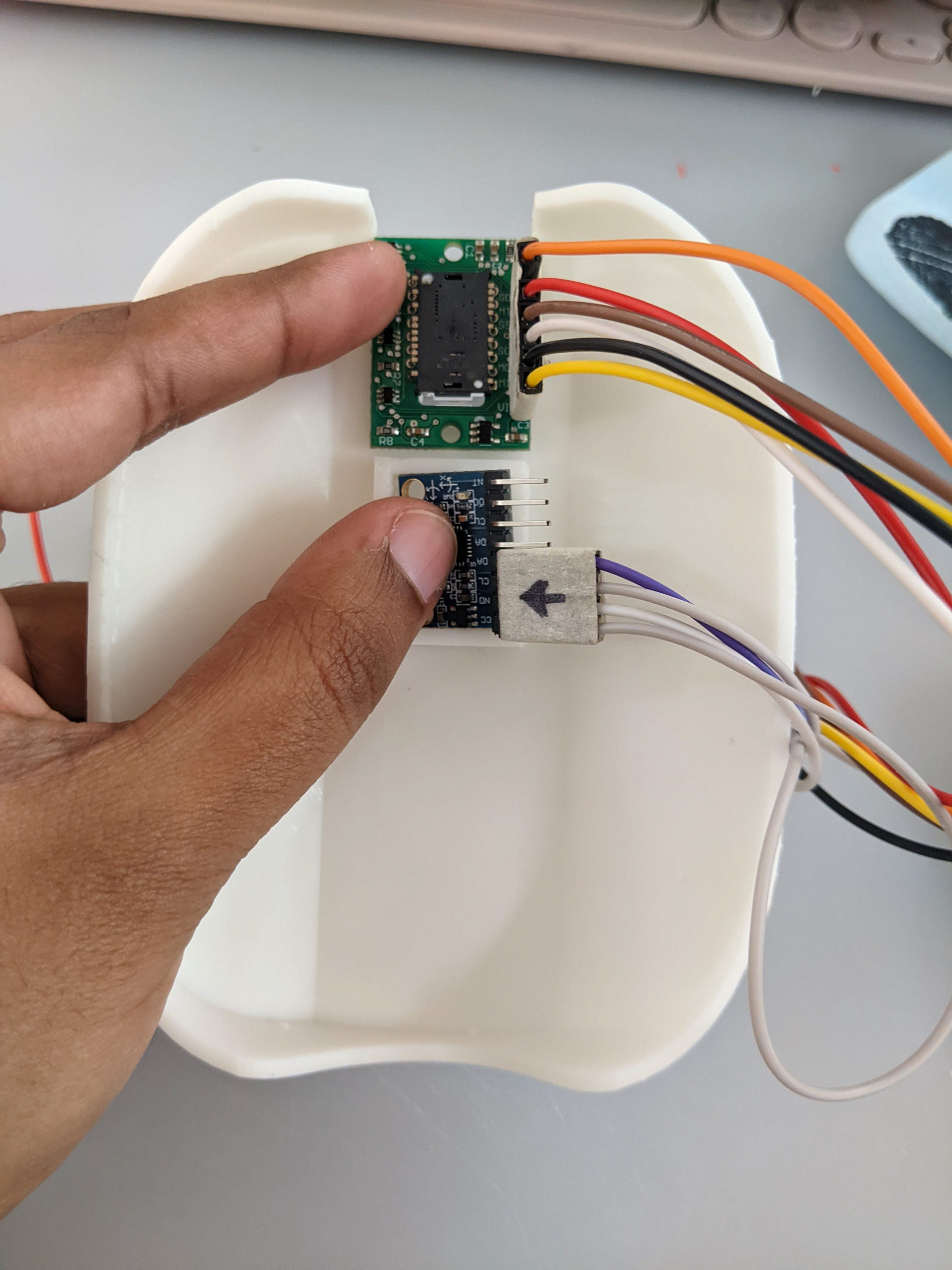
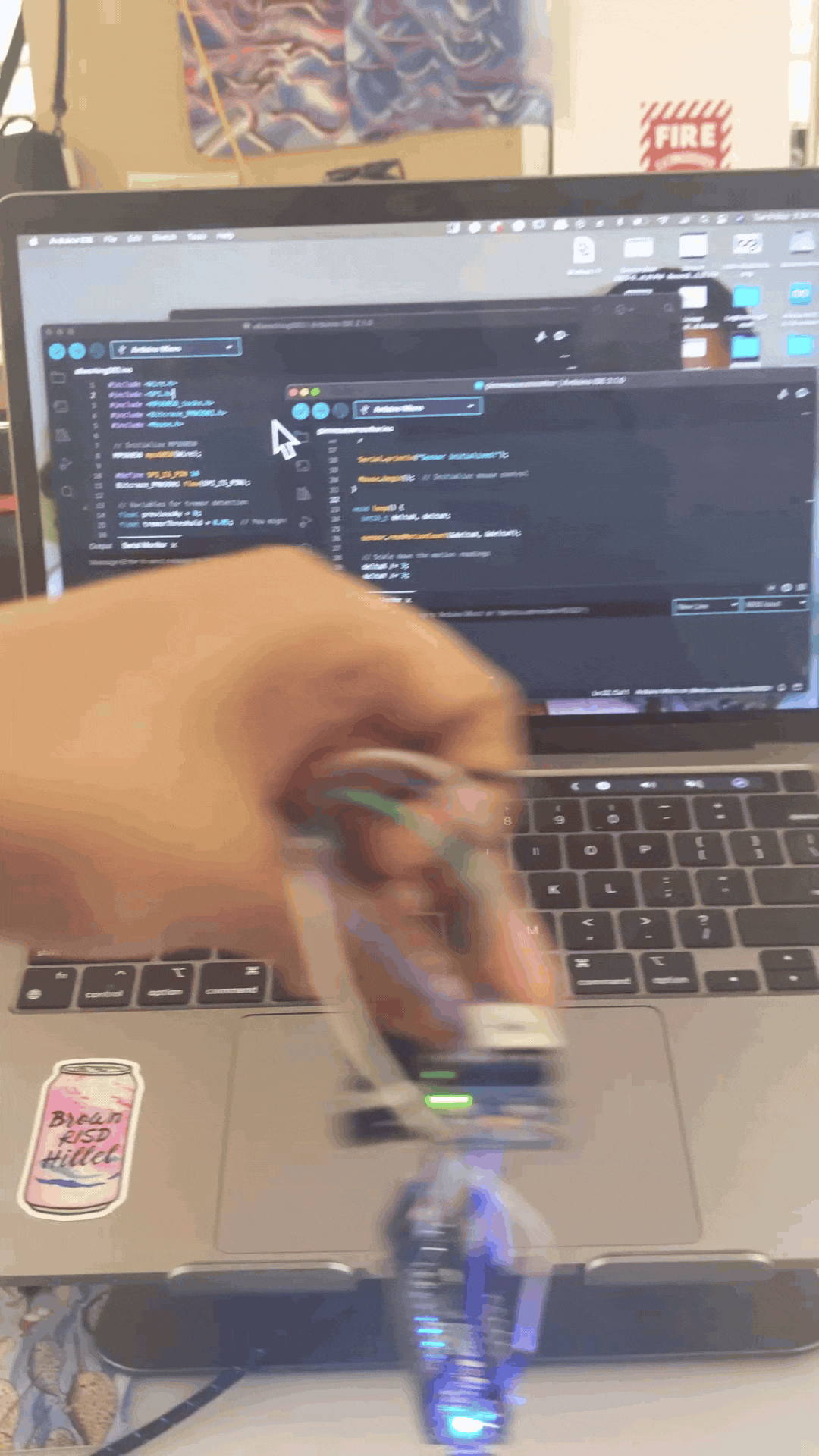
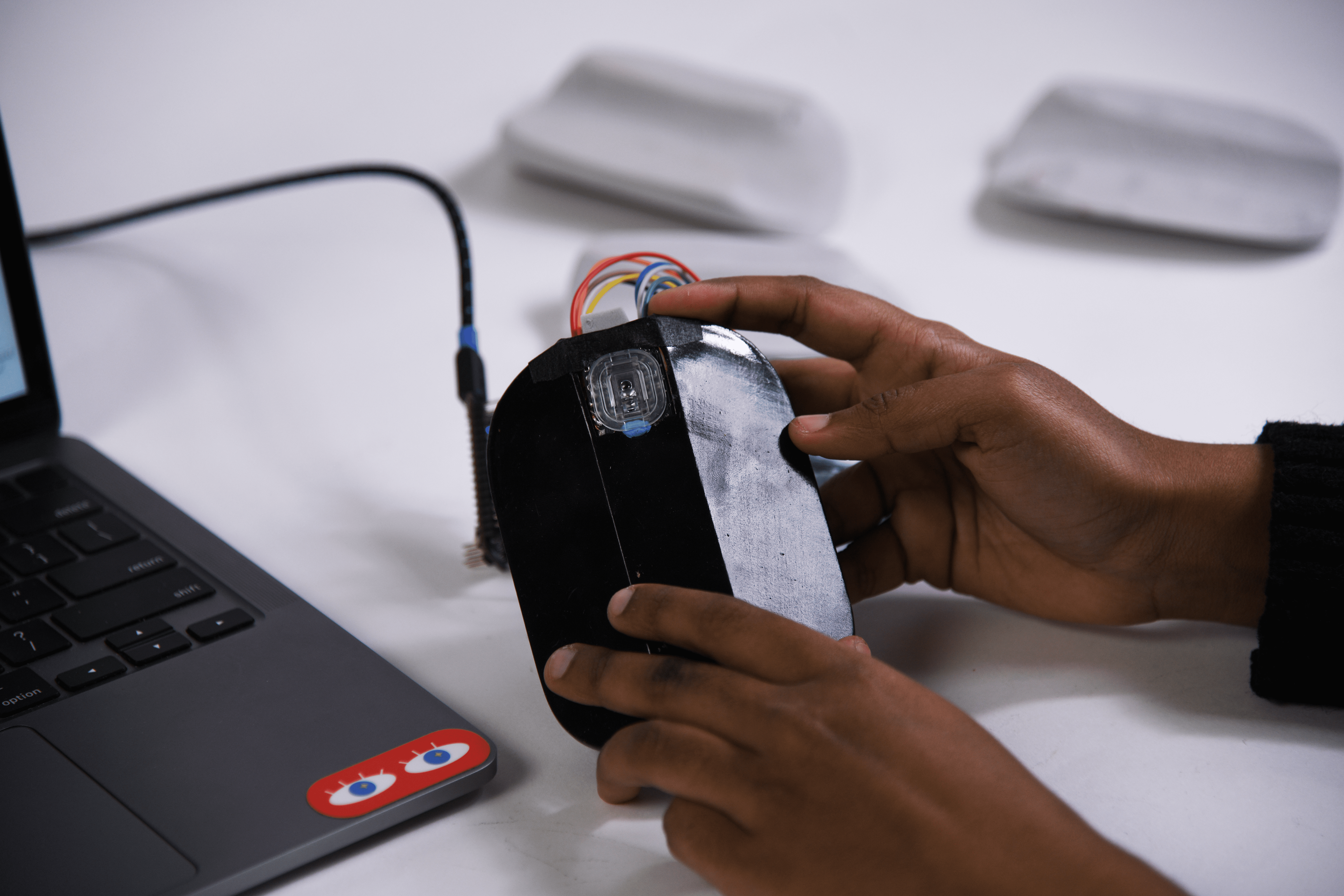
Working prototype video
CMF
Since there is a radical change to how a normal mouse looks, there had to be some similarity to the existing scenario. To keep the context of a workspace intact, the colour palette was basic with matte black and white. The olive green was added for a fresh breath and considering the age group of elders, a hue that is calming to the eye and serene was suggested. Made with 2-part injection moulding, the primary material is ABS with provision to easily disassemble during the recycling process.
Since there is a radical change to how a normal mouse looks, there had to be some similarity to the existing scenario. To keep the context of a workspace intact, the colour palette was basic with matte black and white. The olive green was added for a fresh breath and considering the age group of elders, a hue that is calming to the eye and serene was suggested. Made with 2-part injection moulding, the primary material is ABS with provision to easily disassemble during the recycling process.
